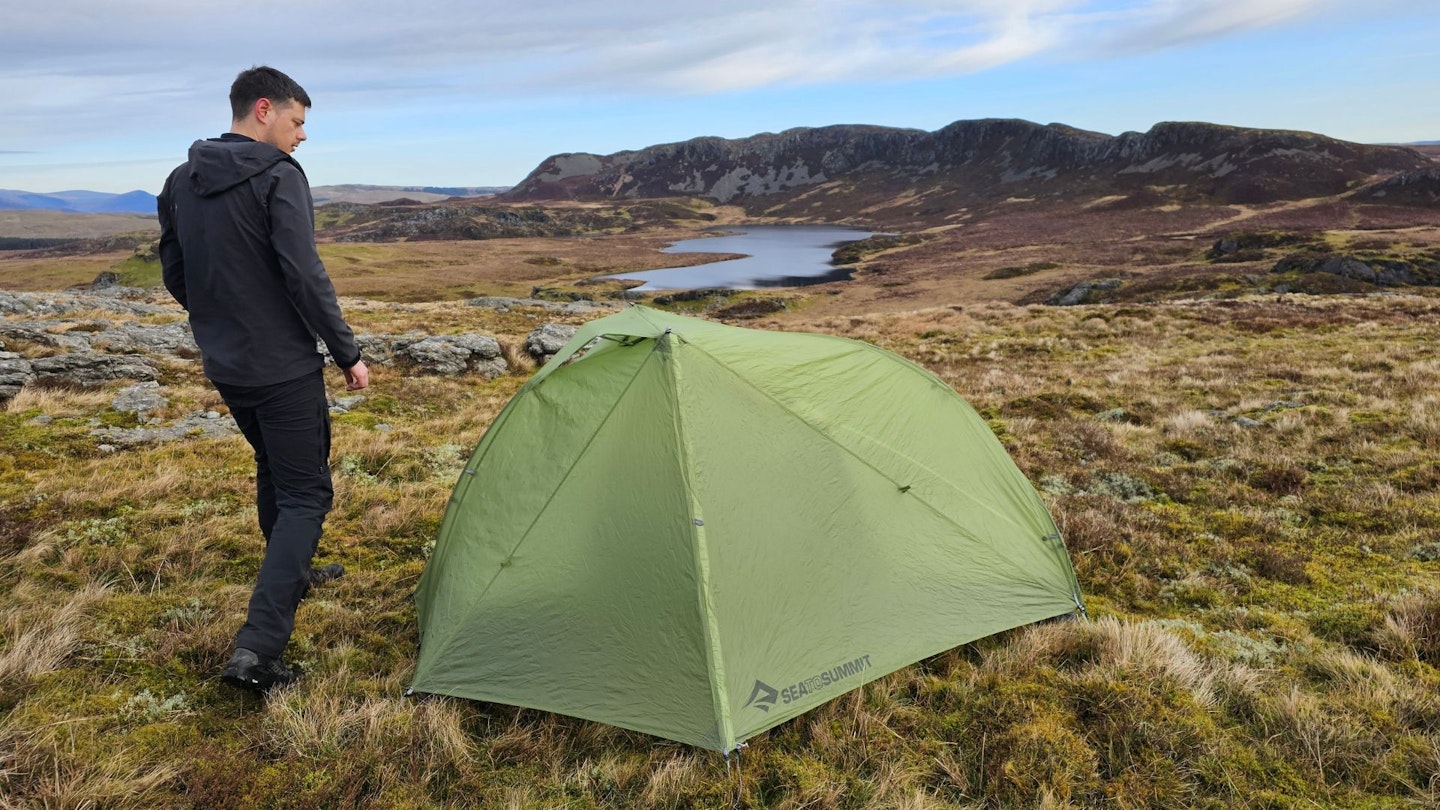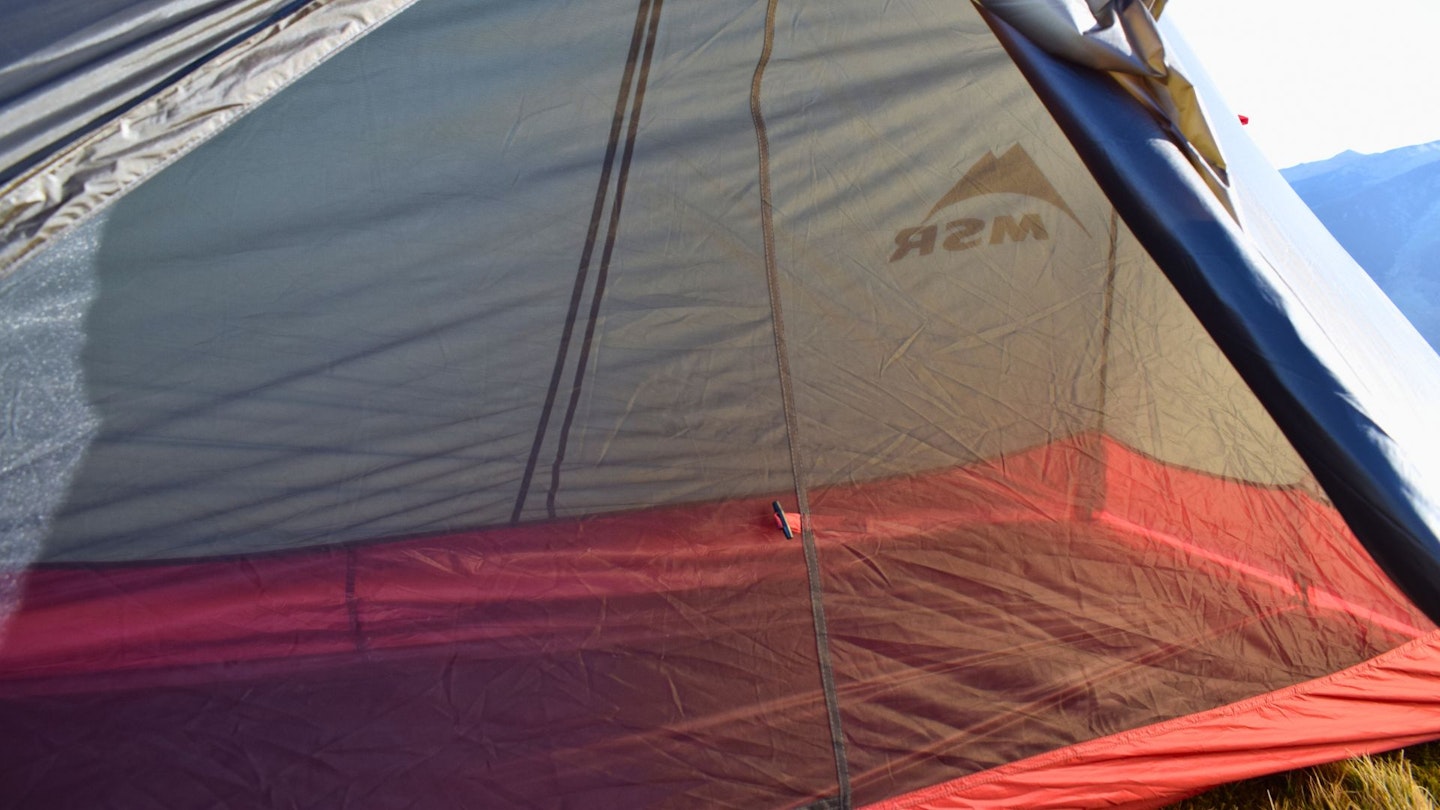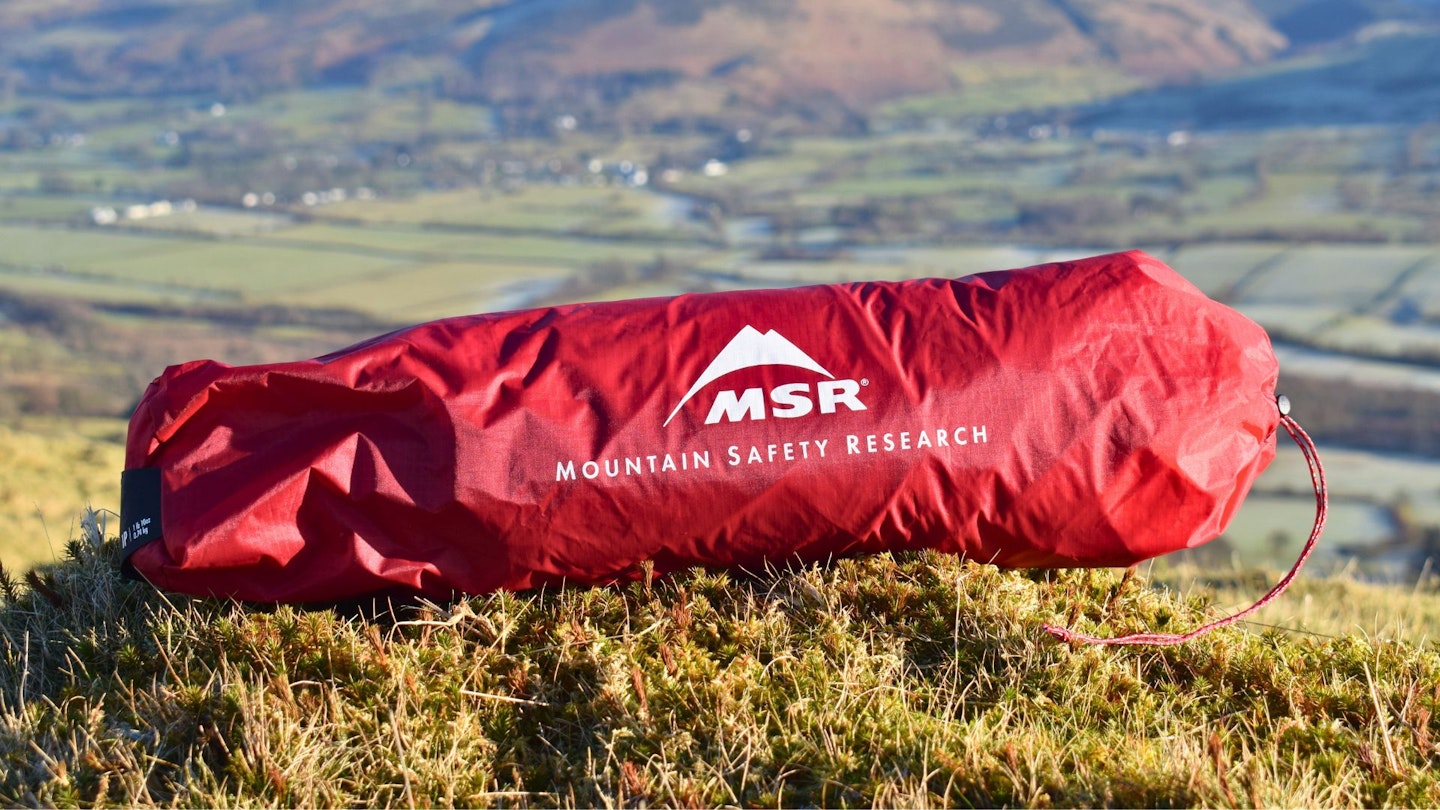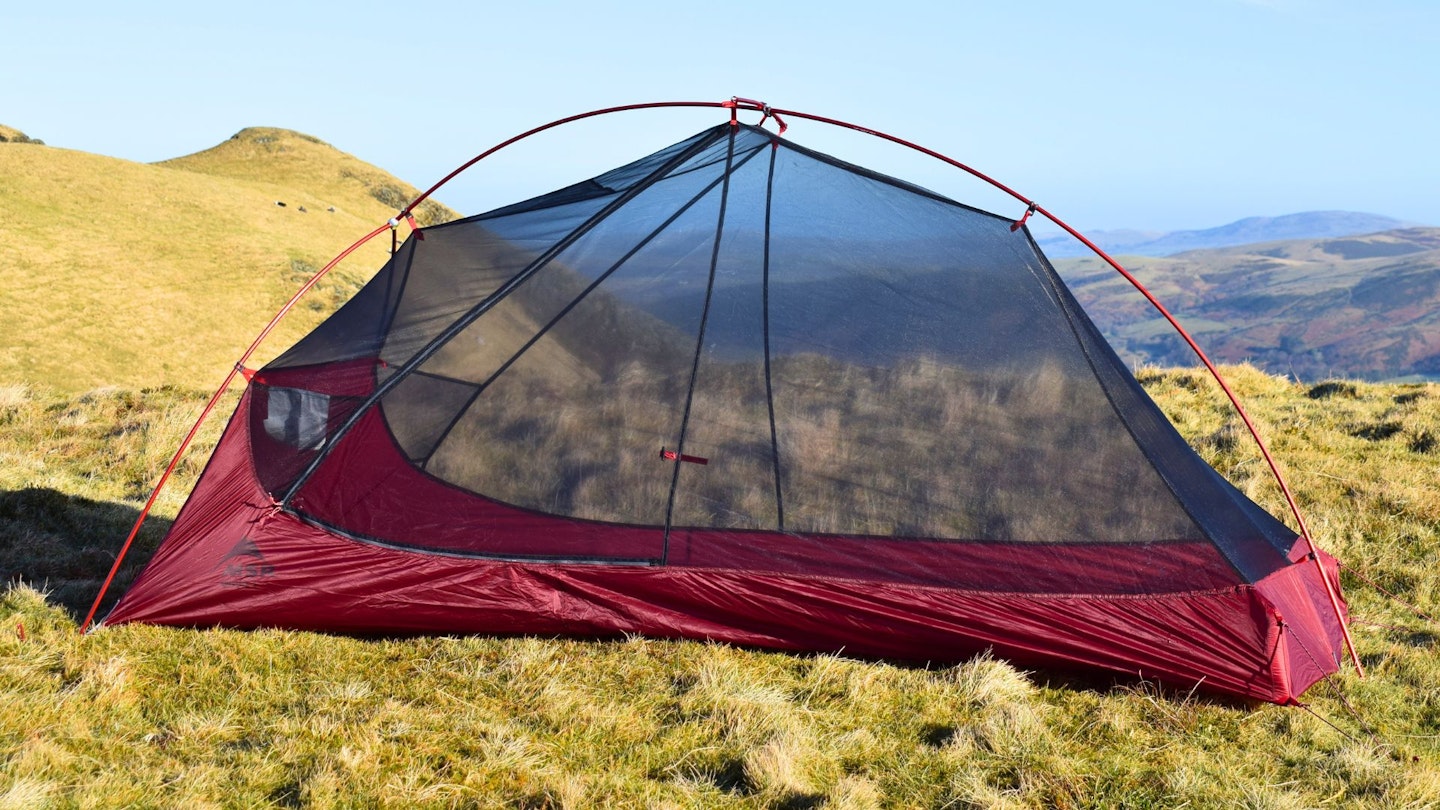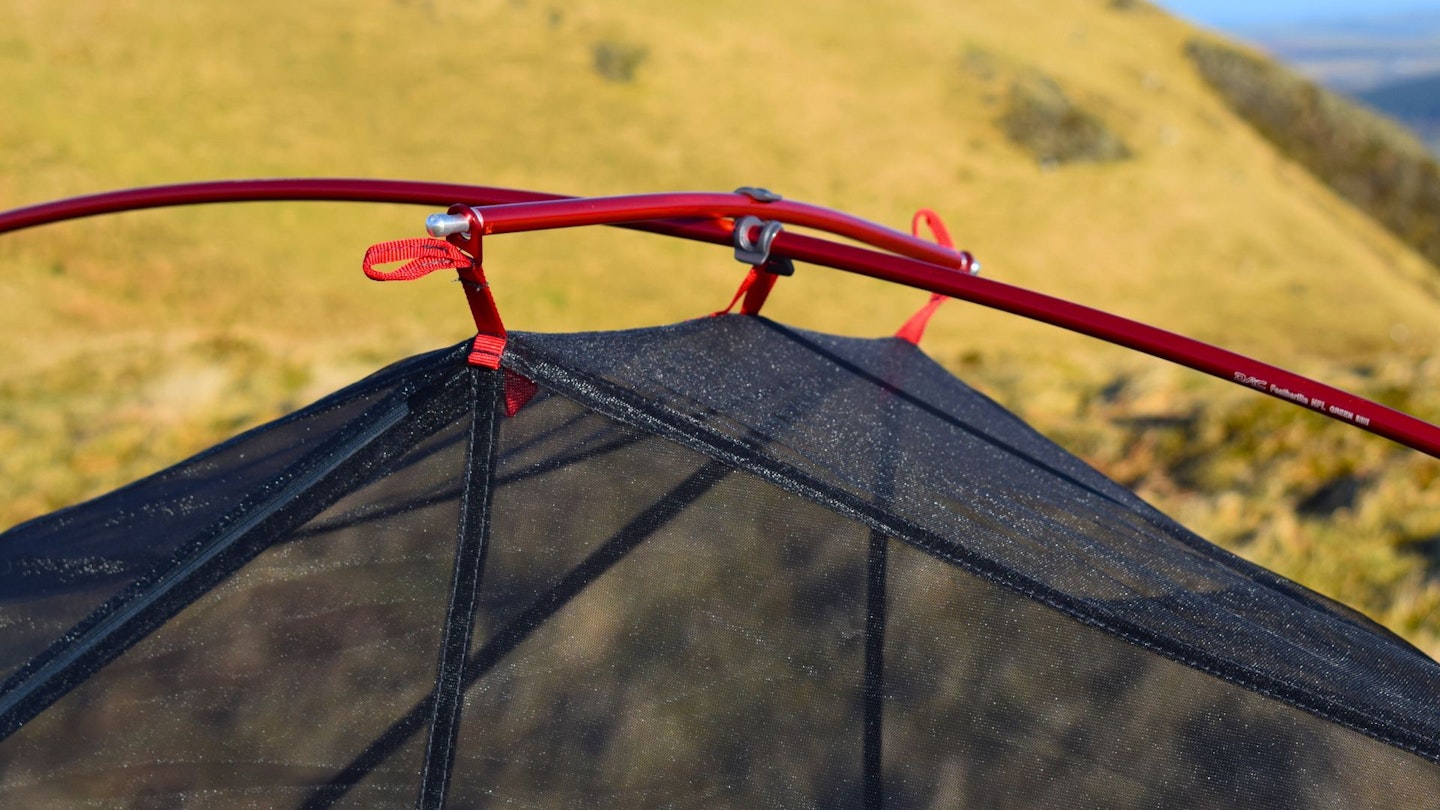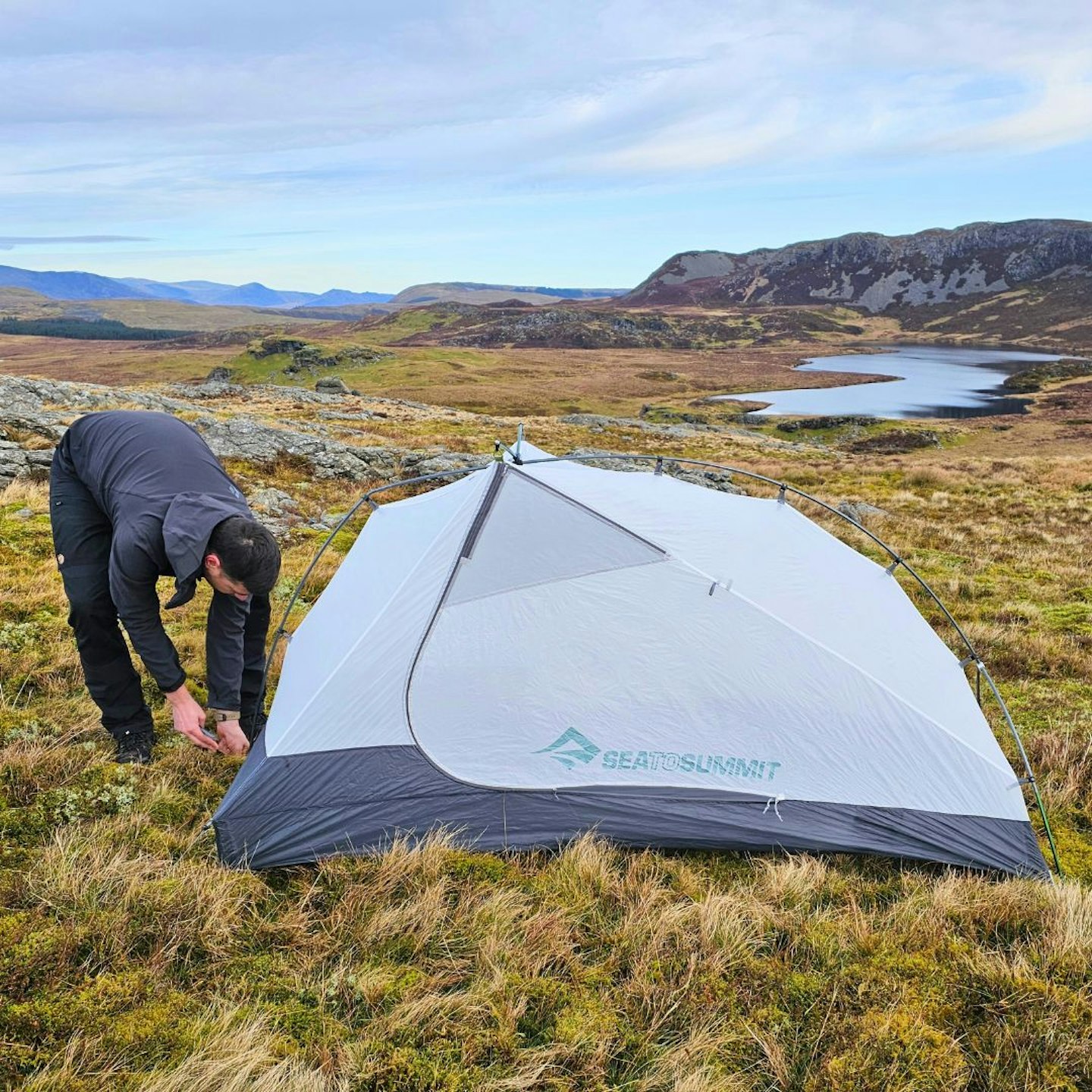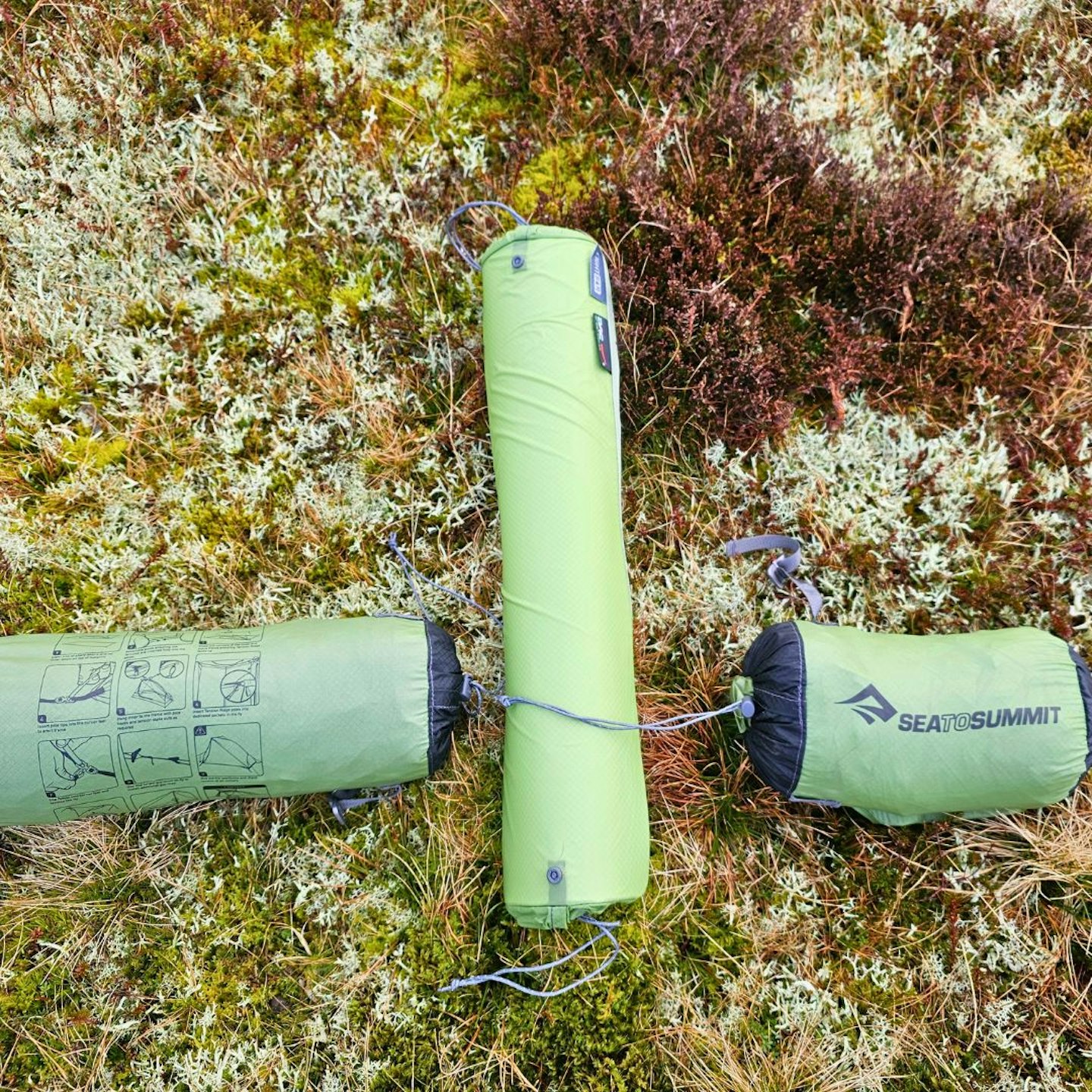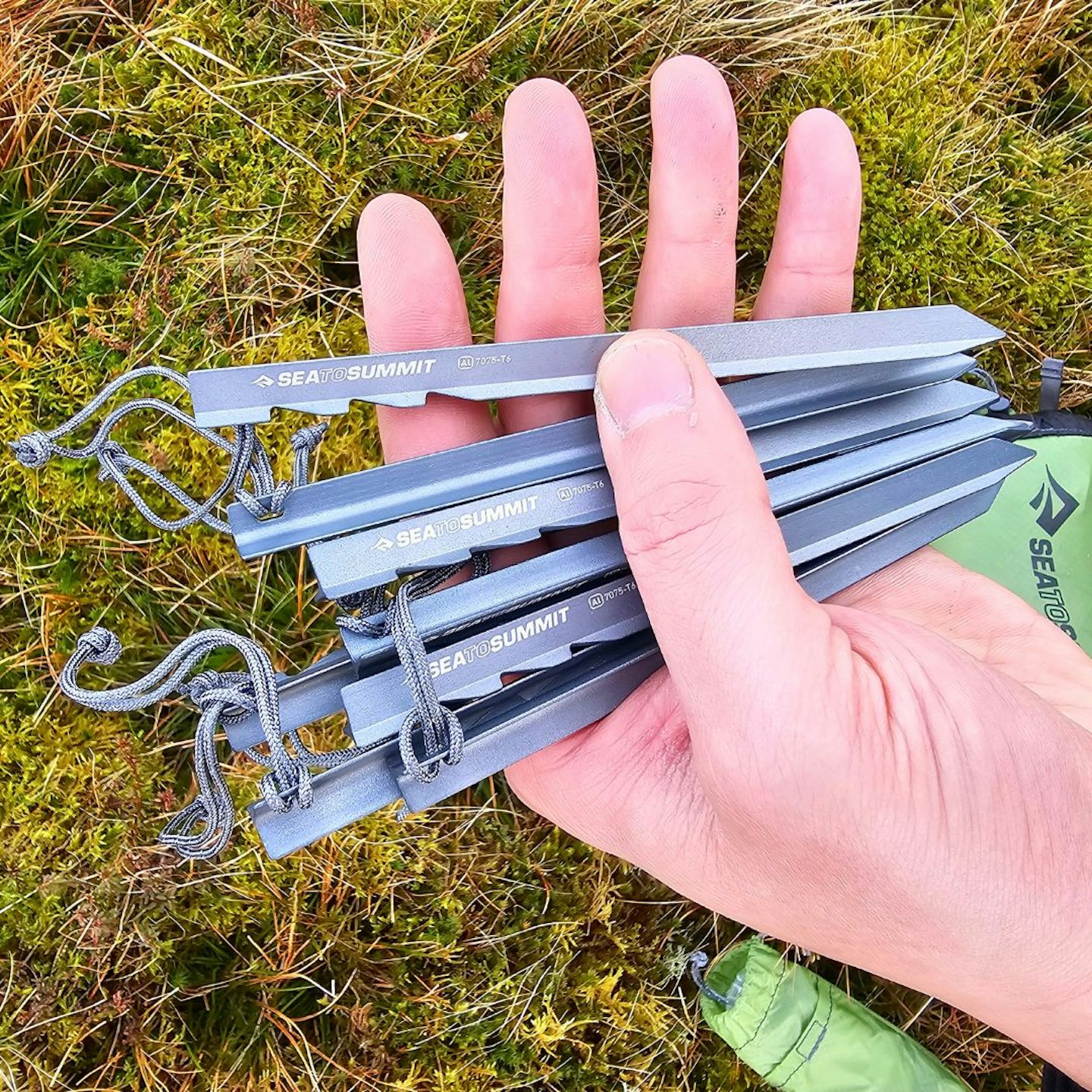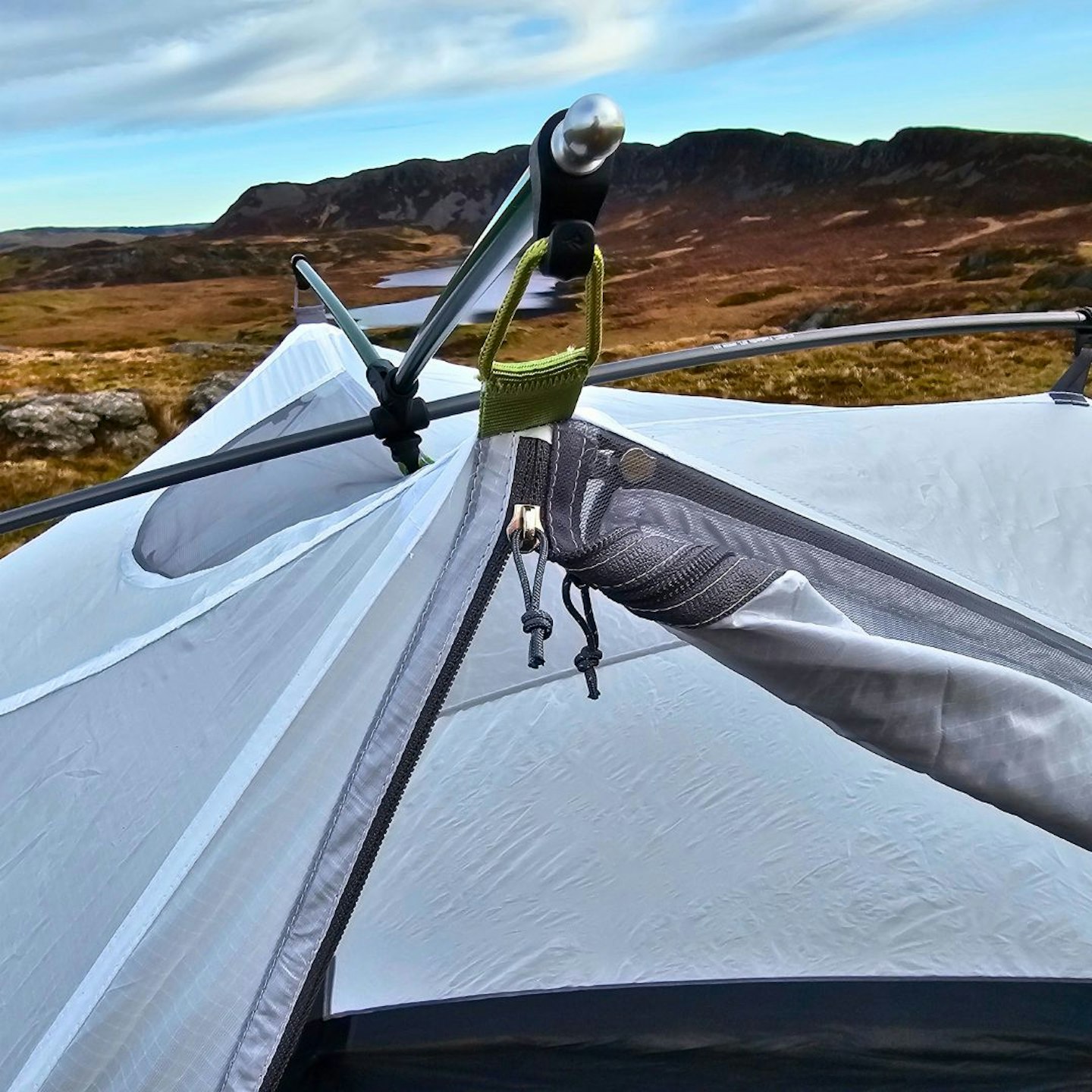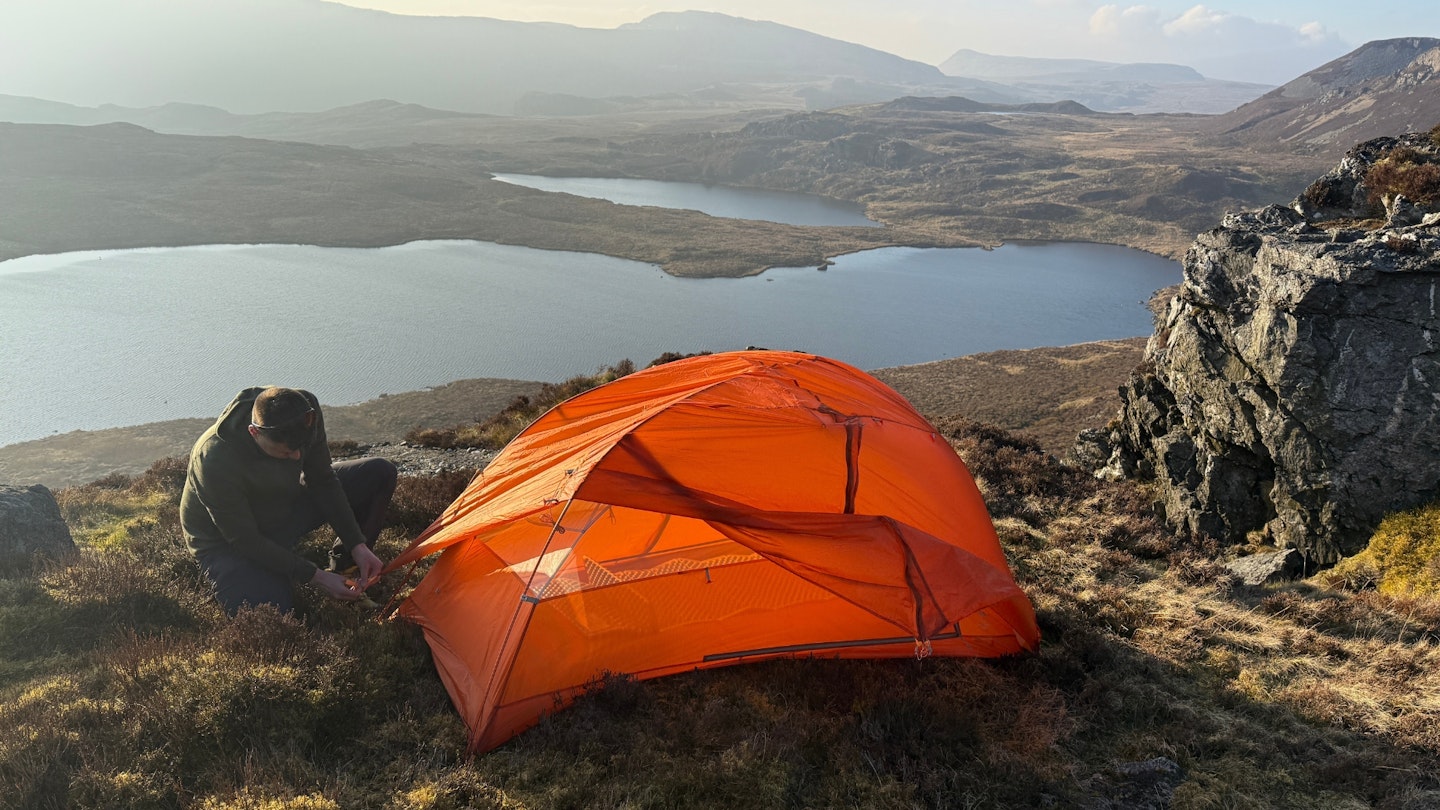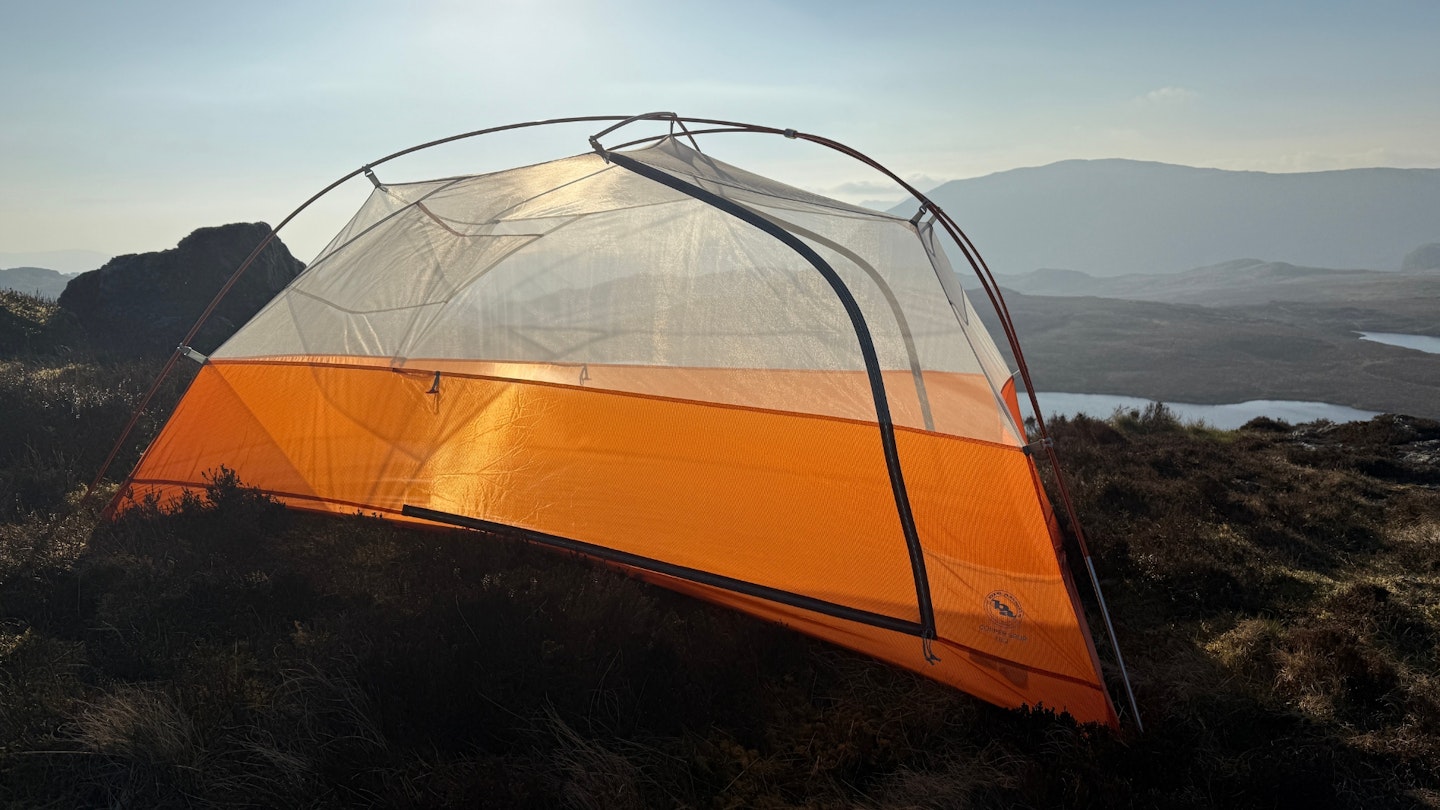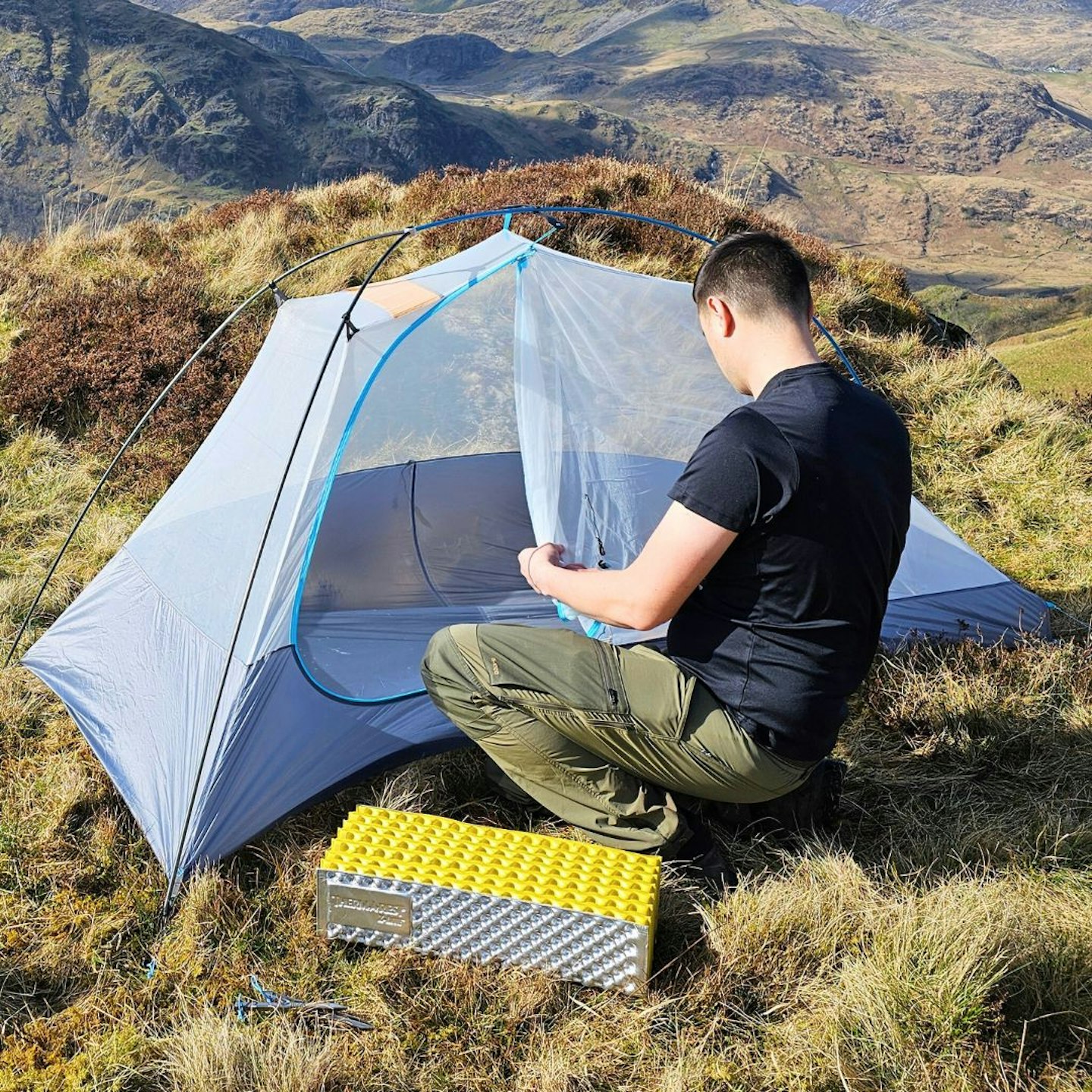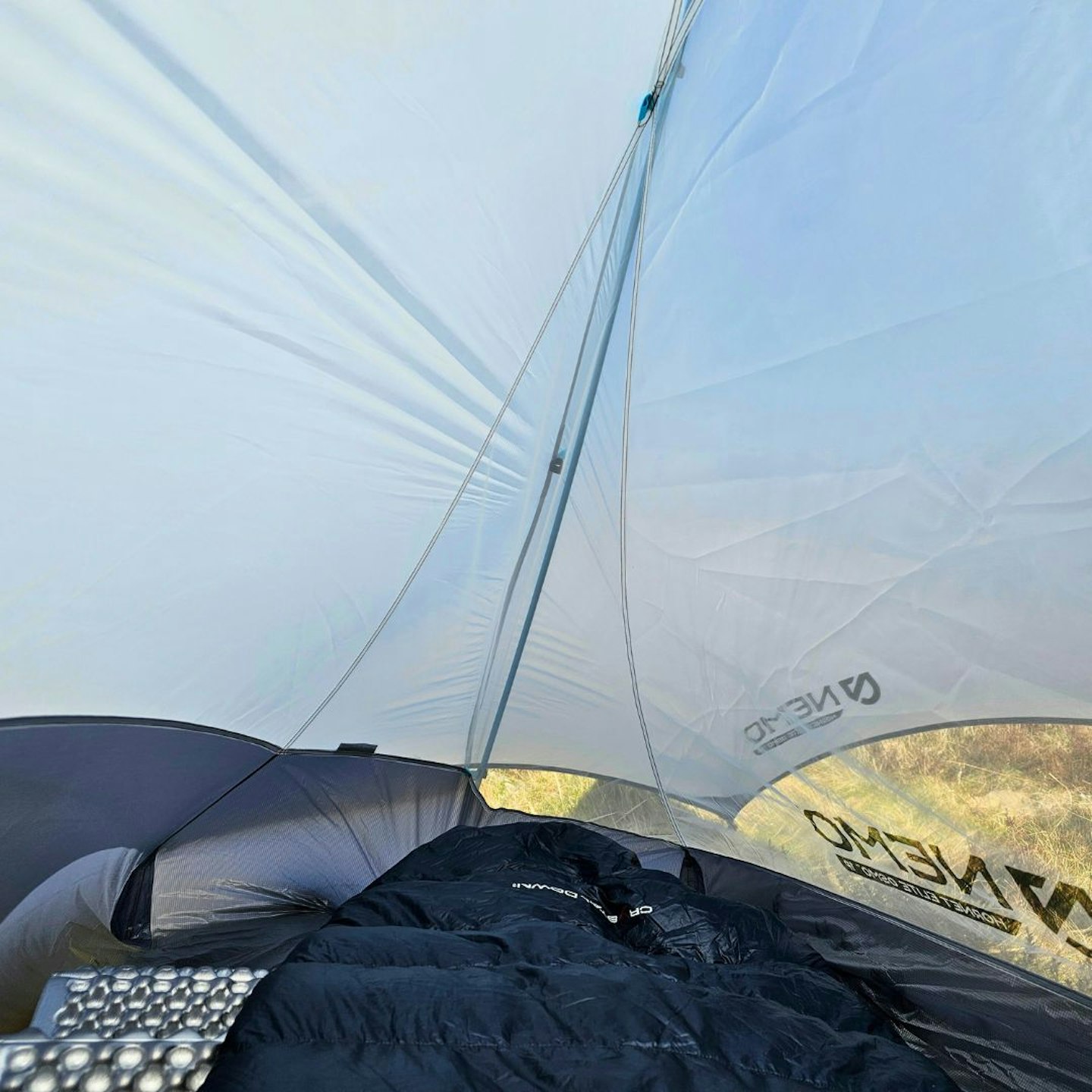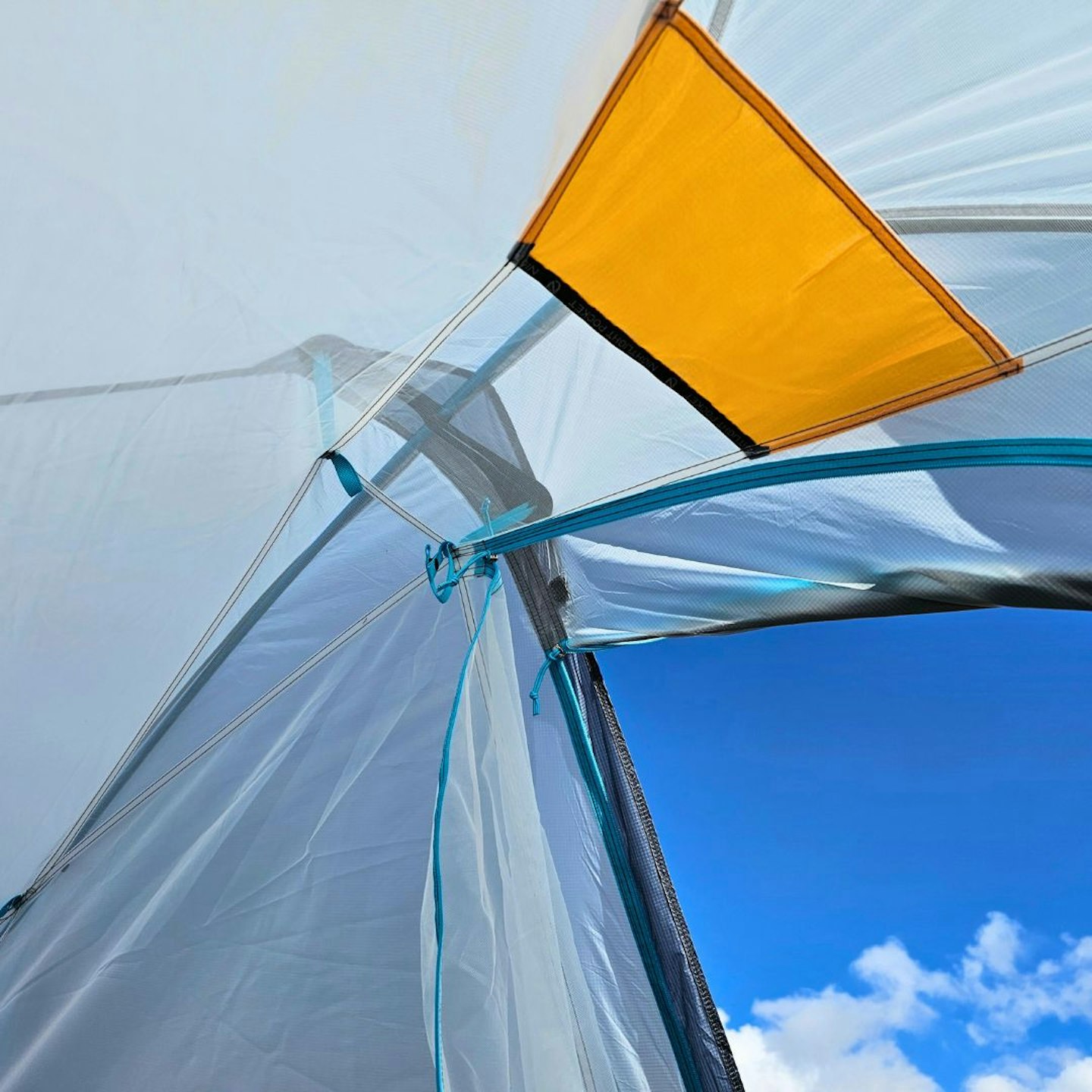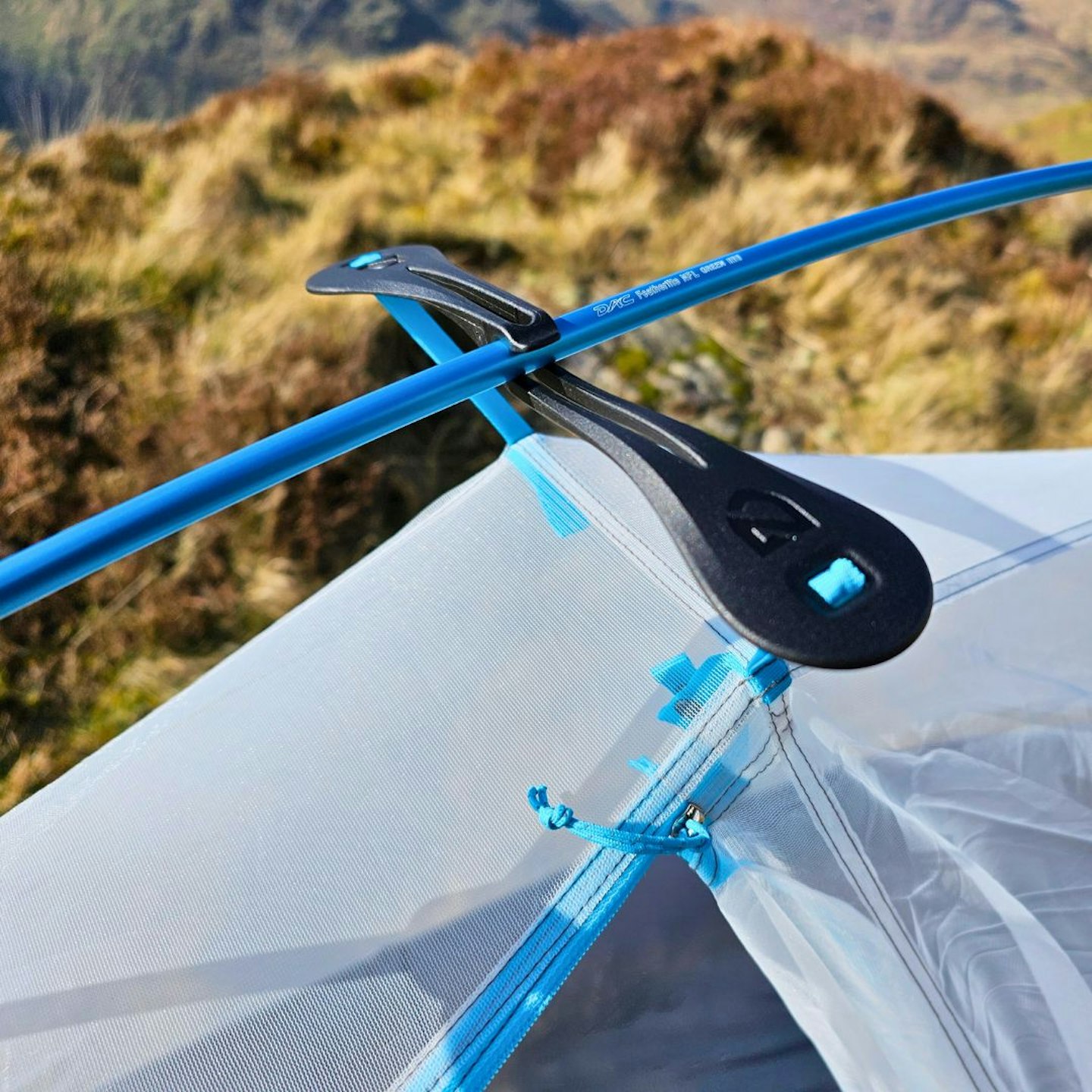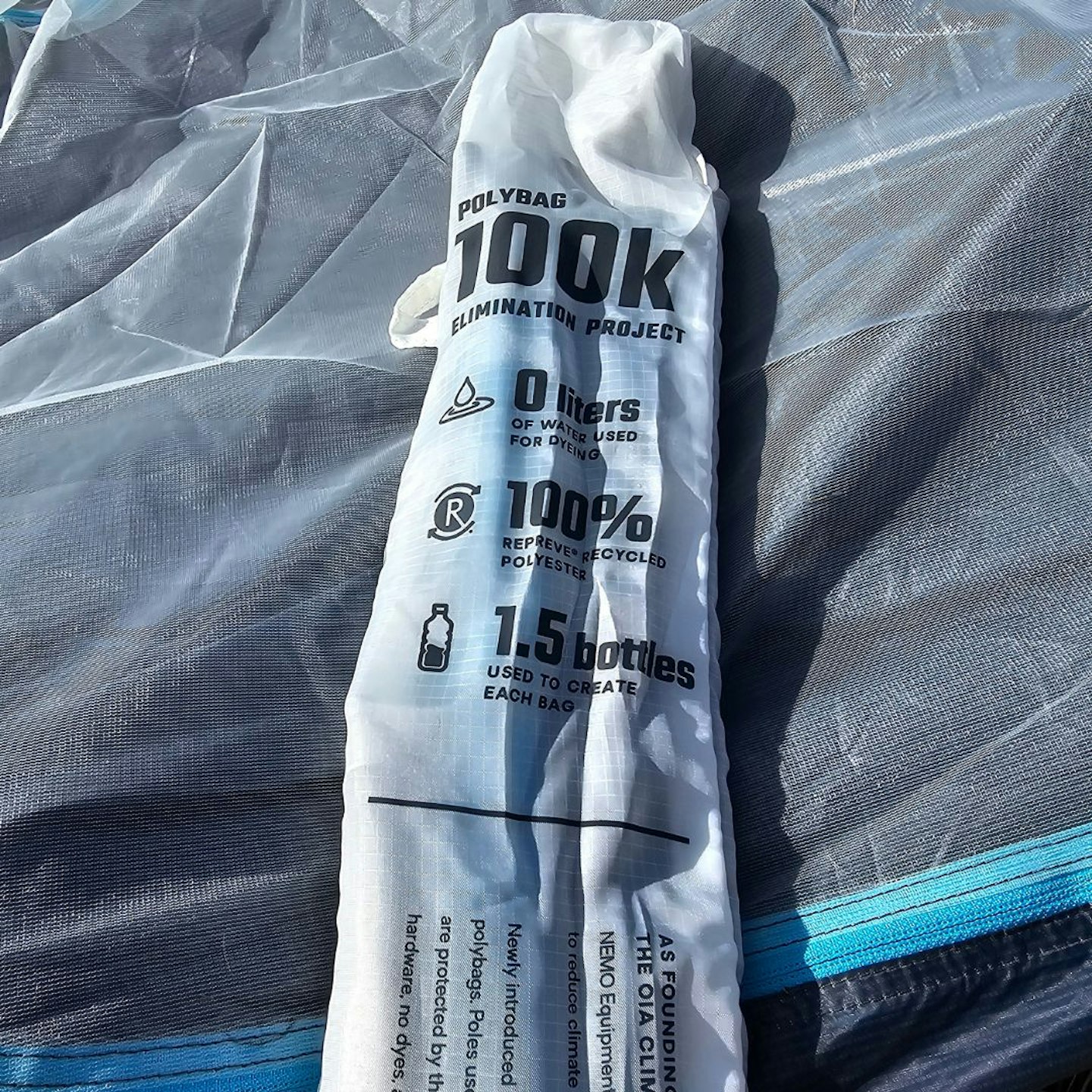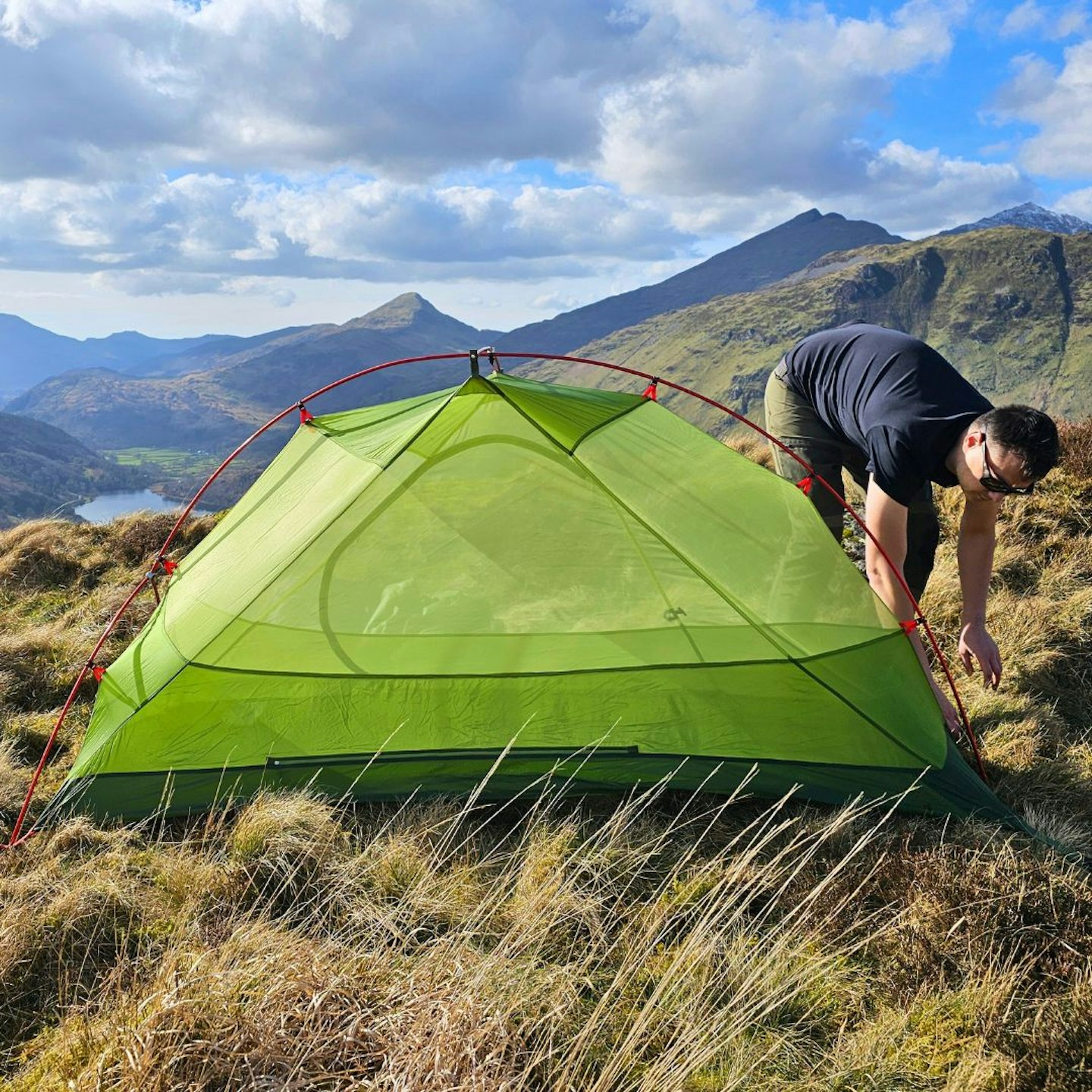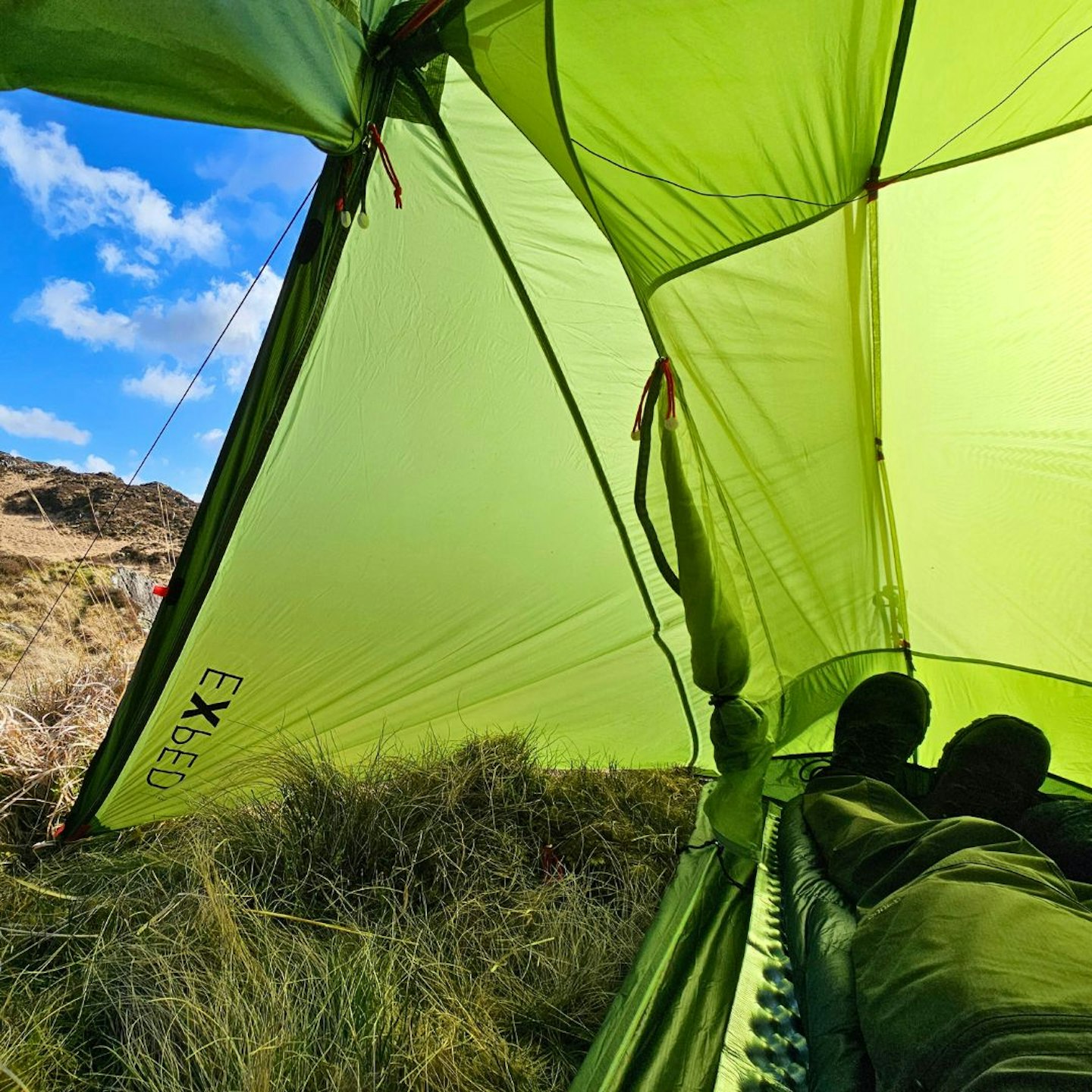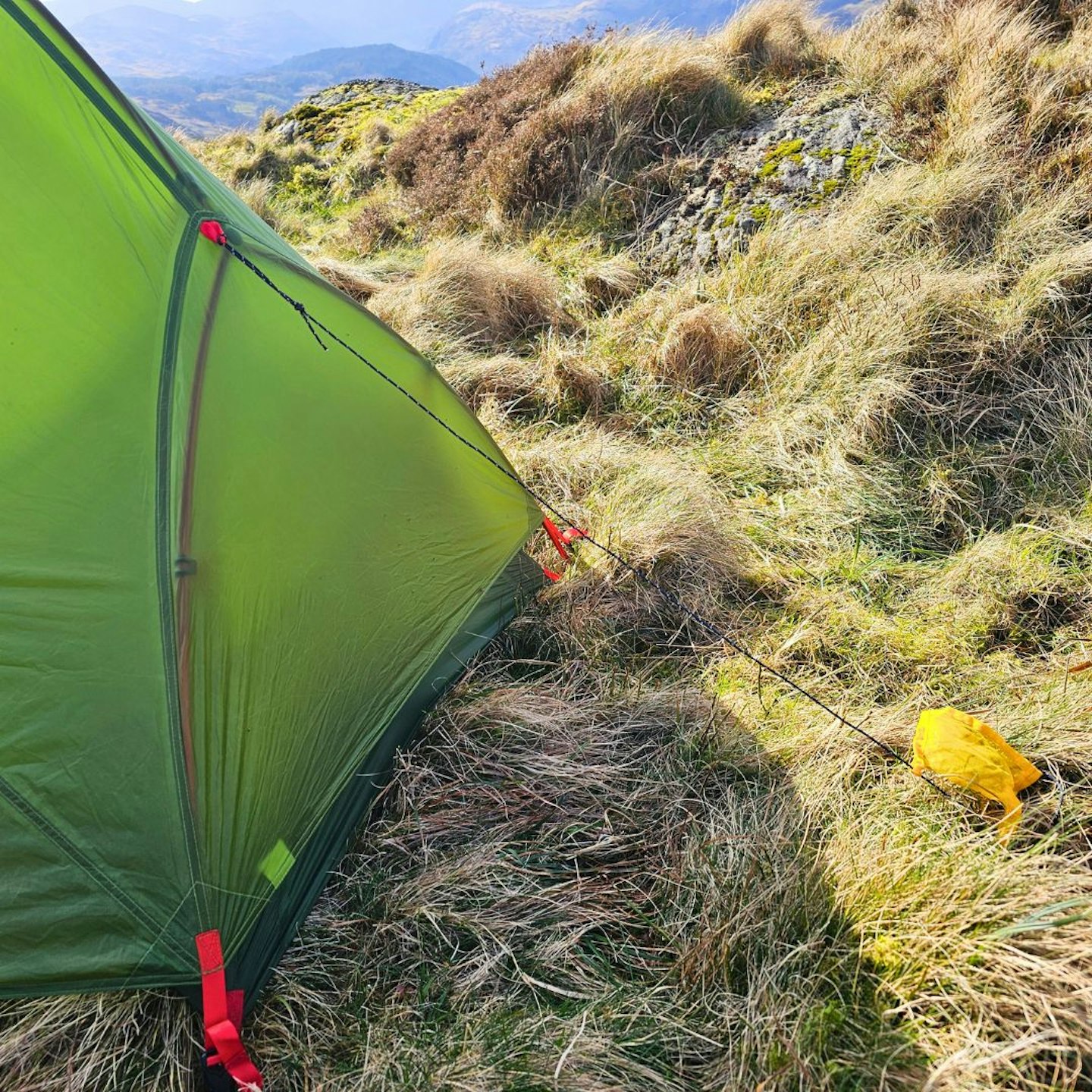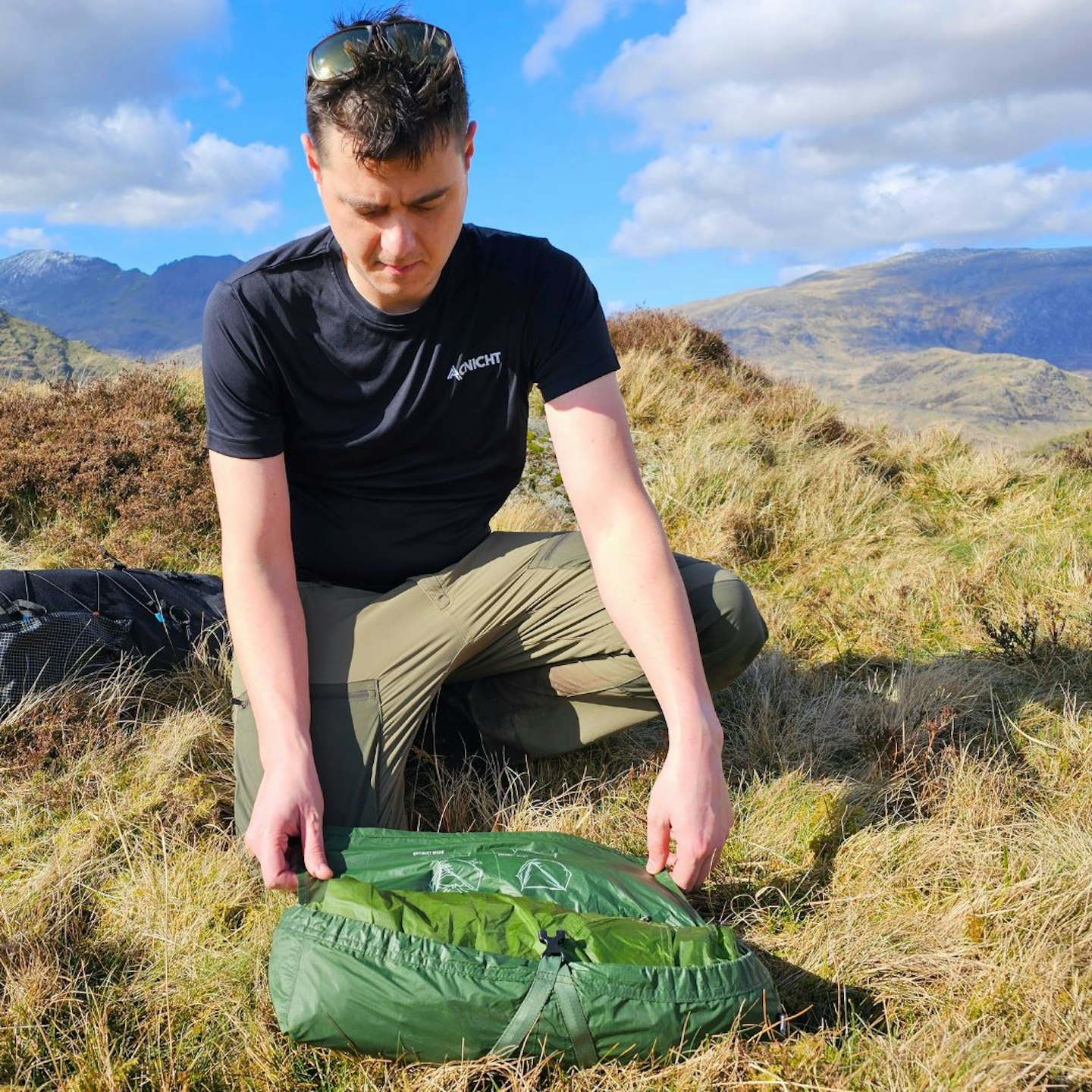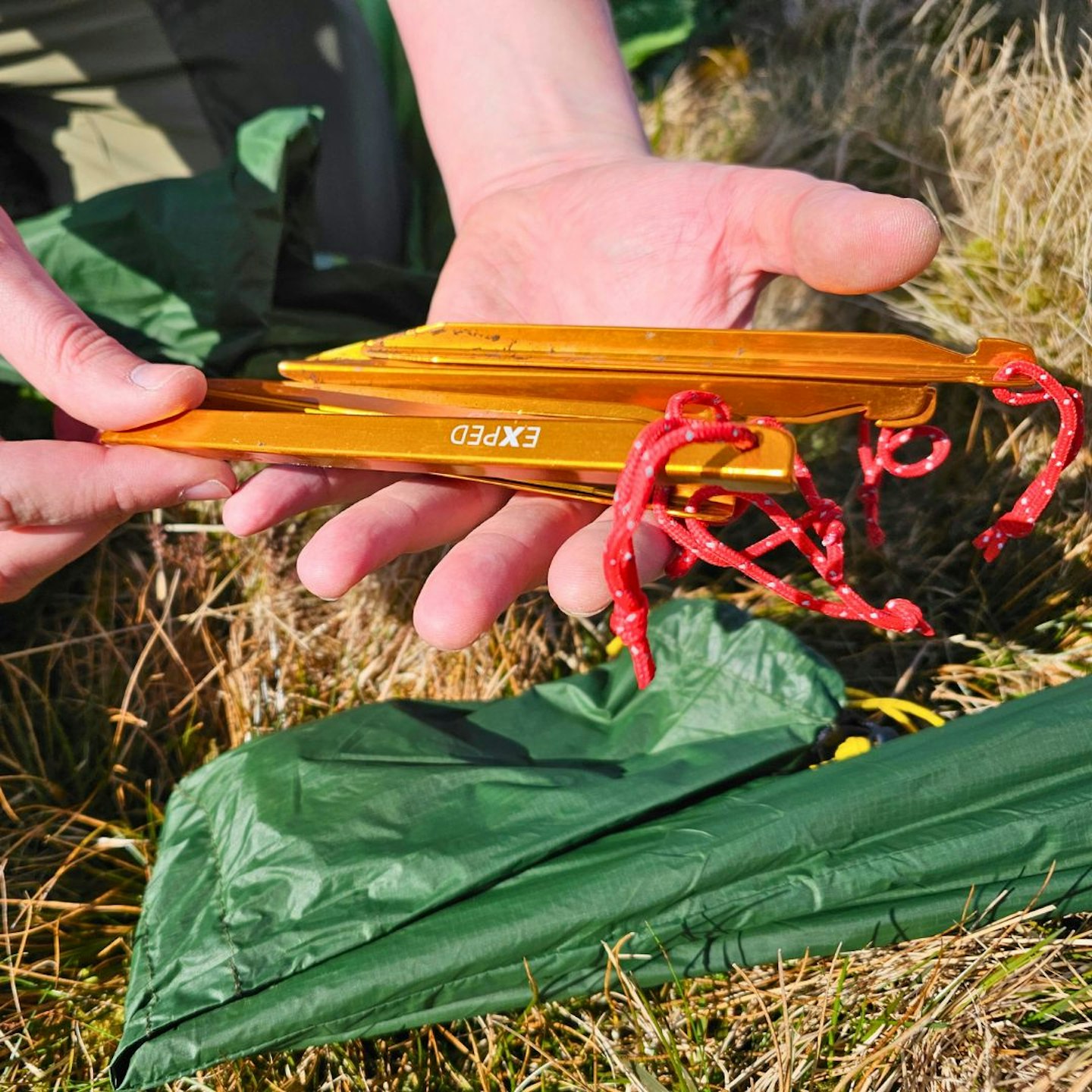In our experience, many of the best backpacking tents are two-person options thanks to the extra space on offer, but one-person options are still a great option if weight and pack size is your number one concern.
Over the decades (and it really has been decades) our outdoor writers and gear testers at Live for the Outdoors (LFTO) and Trail magazine have used and abused hundreds of backpacking tents in real-world, often gnarly conditions in the British hills and mountains.
Over that time we’ve seen lightweight backpacking tents evolve from simple tarp or dome style tents into the high-tech, low weight models you see today. But how do you choose the right backpacking tent for your adventure? There’s so much to consider – weight, size, durability, features, comfort, price, and of course sustainability.
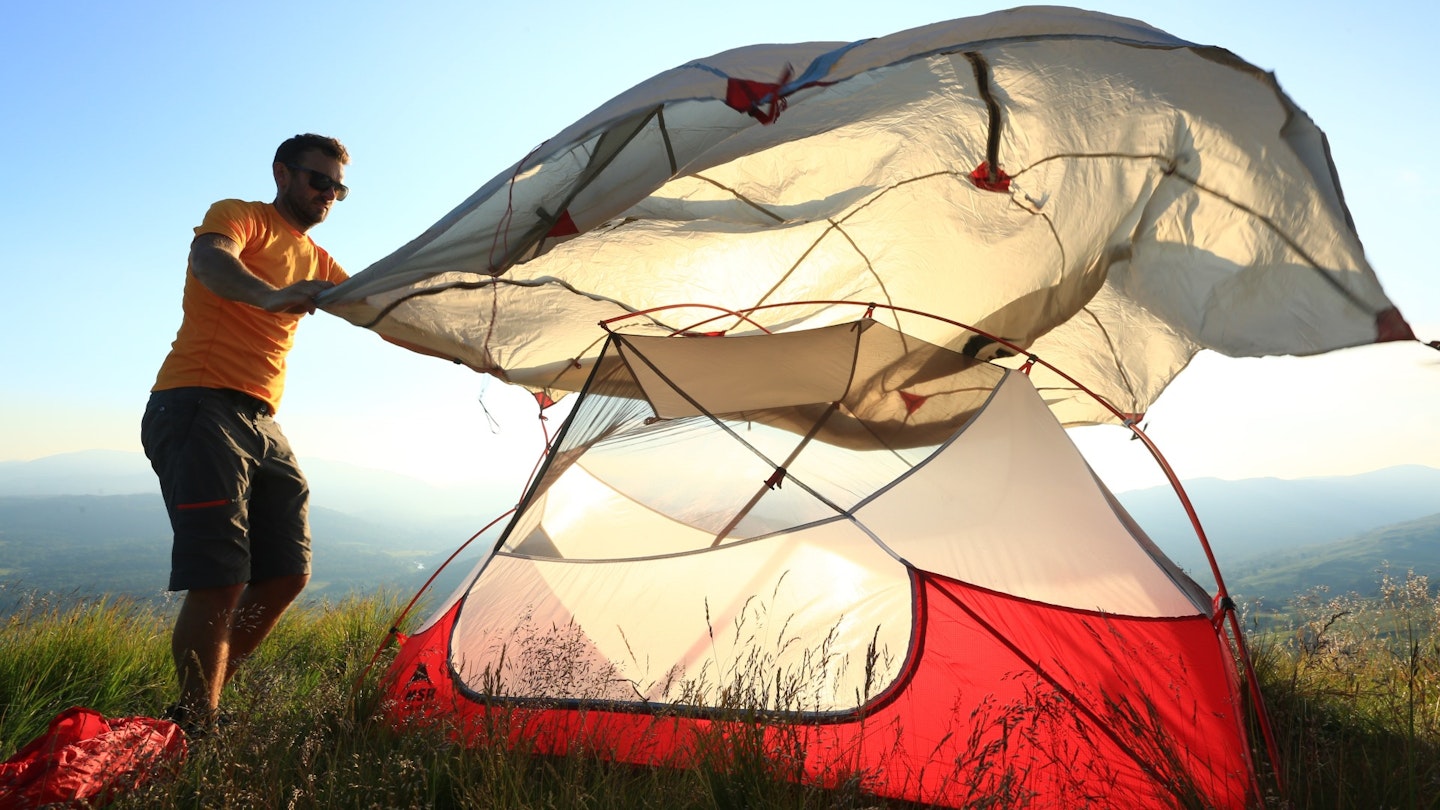
There really is a lot to think about. For example, tents with a low-to-the-ground, aerodynamic profile will shed wind better, but the most comfortable tents have roomy interiors with vertical walls and ample headroom. If you’re carrying a tent up a mountain, you’ll want it to weigh as little as possible – but the lighter it is, the less robust or more expensive it’ll be.
We’ve done the hard work for you by testing a range of two-person and one-person tents in real-world conditions and whittling them down to our few favorites. We’ll be stunned if one of these doesn’t match your requirements.
What are the best backpacking tents of 2025?
How we tested the best backpacking tents
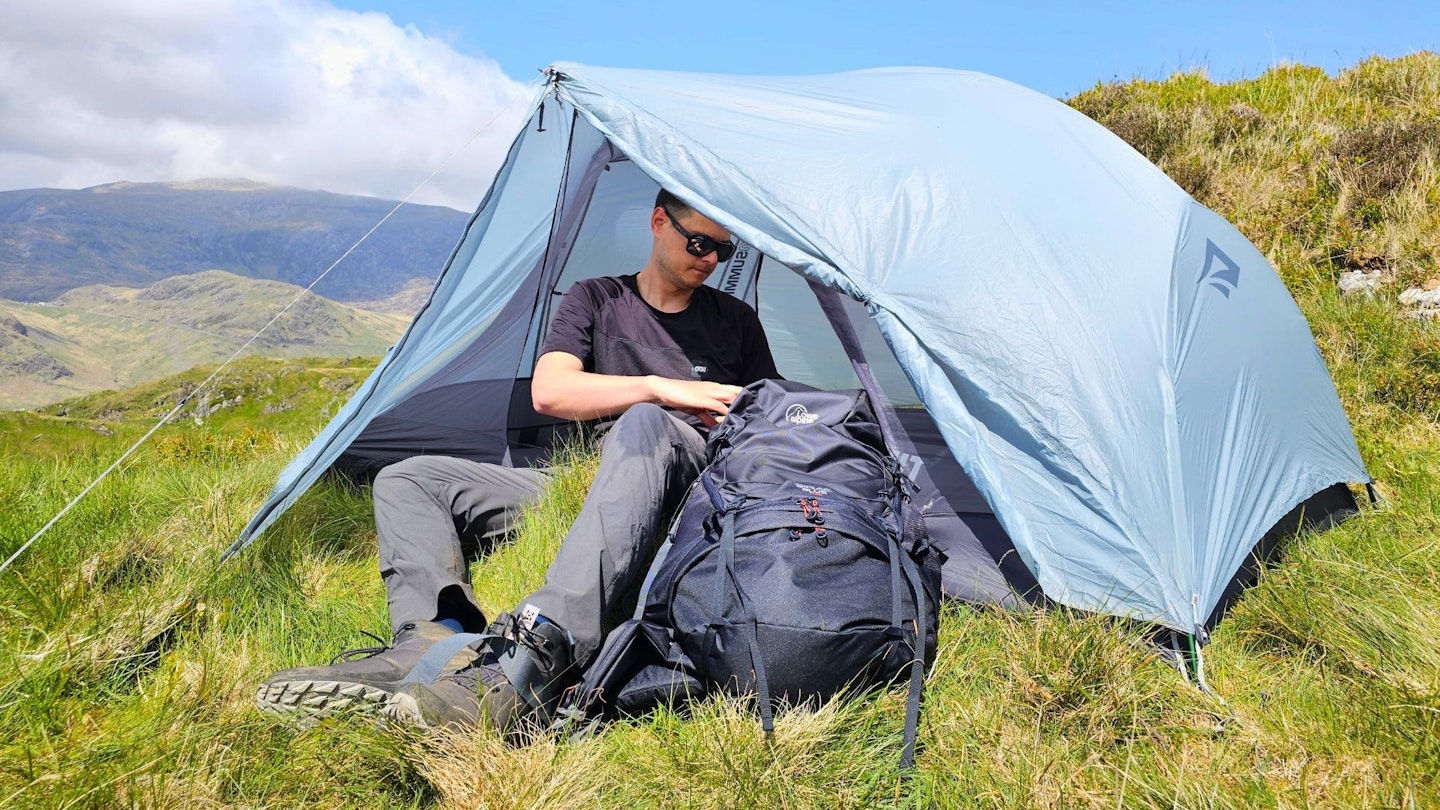
We take our test tents out on proper excursions. Backpacking tents we tested spent many hours pitched on hillsides and mountains. We, of course, use them for sleeping in on our trips, but we also spend a lot of time examining every detail about them, from living space and ease of pitching to material quality and sustainability.
The backpacking tents recommended here were tested by James Forrest and Matt Jones – two of the UK's leading and most experienced outdoor writers. James lives near the mountains and alongside being a freelance writer, he's also is a highly experienced backpacker and backcountry camper.
Matt is a former outdoor magazine editor and now a freelance journalist based in the the mountains of North Wales. He is one of the most well-known and experienced outdoor writers in the UK.
Read more about how we test.
The best backpacking tents reviewed:
If you want a dome-shaped, high-walled tent with superb internal livability at an ultralight weight, there are a few products out there that hit the brief – the MSR FreeLite 1, Sea to Summit’s Alto TR1, and this tent, the Big Agnes Copper Spur UL1. There’s little to choose between them, in all honesty, and their similarities are significant.
The differences? The FreeLite is the lightest and most minimalist, the Alto probably has the best headroom, but the Copper Spur is (perhaps) the best all-rounder. It’s a fully-featured, well-executed tent with loads of top-notch design features.
You get a sizable porch, superb door set-up (including awning option), wonderfully taut structure, and excellent internal storage options (including a “floating”, off-the-floor “shelf”). It weighs just 2.46lbs and packs away to 18.1x4.7in, yet delivers loads of internal space with great headroom and steep walls (although it’s not the widest).
It’s the same old downfalls: the mesh inner is cold and drafty when the temperature drops, wind-resistance is okay but not great and the hydrostatic head rating is only 1,500mm. But Big Agnes’ new eco-friendly HyperBead tent fabric certainly feels very premium – it’s 25% more waterproof and 6% lighter than previous versions, as well as PFAS-free, according to the thru-hiking brand.
Read our full Big Agnes Copper Spur UL1 review here.
Pros
- Impressive tent fabric
- Clever gear storage 'shelf'
- Sizeable vestibule
- Lightweight
- Excellent livability
Cons
- Not as light as we'd hope for the price
- Not the most weather resistant
| RRP: | $449.95 |
| Internal dimensions (LxW): | 7ft 4.2in × 3ft 2.2in |
| Internal peak height: | 3ft 2.2in |
| Packed size: | 1ft 6in × 4.7in |
| Weight: | 2lb 7oz |
You may not have heard of Near Zero before. It's quite a new outdoor brand that's based in Arizona and focuses on making kit that's designed for ease of use and to be affordable, with the ultimate goal of making overnight hikes more accessible to more people.
We like that mission statement, and we like the gear that's come from Near Zero as a result. We tested one of its hiking bundles over a summer and were very impressed with much of it, including the tent.
As a lightweight tent for summer backpacking trips and hikes, there's lots to commend the Near Zero tent for, not least because of the price. At just 3.95lbs, this is a super lightweight model, which also packs down very small. Yet it offers excellent livability, thanks to two vestibules and doors and cross section in the pole that gives more headroom inside.
The inner is full mesh, and the fly and floor are both 20D nylon. It's therefore not the toughest tent and isn't the most weather-resistant either. Sure, it'll happily fend off a bit of vertical rain but the fly doesn't extend all the way to the ground meaning draughts and even some moisture can reach you.
The flipside, of course, is that ventilation is superb, and if you get lucky with a warm night, you can stargaze unobstructed by removing the fly.
Read our full Near Zero Bundle review.
Pros
- Good value
- Lightweight and compact
- Two porches
Cons
- Not the most weather resistant
| RRP: | $299.50 |
| Type: | Dome |
| Weight: | 3lb 15oz |
| Packed size: | 1ft 7in x 4.5in |
| Doors: | 2 |
| Vestibules: | 2 |
| Fly: | Silicone and PU-coated 20D nylon (3,000mm HH) |
| Groundsheet: | Silicone and PU-coated 20D nylon (3,000mm HH) |
| Poles: | Aluminum |
| Inner: | Nylon mesh |
MSR is onto a winner here. The cleverly-designed skeletal pole has a wishbone shape at one end and a transverse pole at the central peak (known as an “overhead spreader bar”), with the inner clipping tightly to this frame. This creates near-vertical walls, maximum headroom and excellent tension to the inner, ensuring a generous rectangular footprint.
You also get a decent-sized vestibule. Pitching is inner-first and the structure is semi-freestanding. The inner has lots of mesh for ventilation and clever zippers that always close to a single point. The hydrostatic heads aren’t particularly high (1,200mm for both the groundsheet and flysheet), but the high-tech tent materials are well-proven.
The flysheet features PU and silicone coatings and has a tight, high-density thread – an approach that guarantees waterproofing, according to MSR’s gear boffins. There are some flaws. A big worry is the flysheet cut-out – a weight-saving innovation that exposes the (albeit waterproof) inner and feels like a weak-spot that could fail in very wet conditions.
Furthermore, the steep walls can catch the wind, the mesh inner is cold and drafty, and the groundsheet is on the thin side. But, overall, this tent is a gram-saving revelation – so much comfort for approximately 2lbs is quite remarkable.
Read our full MSR FreeLite 1 review here.
Pros
- Ultralight
- Excellent internal space
- Effective ventilation
- Taut structure
Cons
- Underwhelming waterproofing stats
- Not the most weather resistant
| RRP: | $435 |
| Internal dimensions (LxW): | 7ft 3in x 2ft 9in |
| Internal peak height: | 3ft 3in |
| Packed size: | 1ft 7in x 4in |
| Weight: | 2lb |
The Alto TR1 Plus from Aussie outdoor brand Sea to Summit is a double-skinned solo tent designed for lightweight backpacking. It’s described as a ‘3+ season’ model, intended to enable use into the so-called ‘shoulder seasons’ of early spring and late fall, thanks to more weatherproof fabrics. This is what distinguishes the ‘Plus’ version from the standard model. We’d say it’s worth the upgrade.
It is slightly more expensive, but features a full fabric inner, which is considerably warmer than mesh, plus upgraded waterproofing for the bathtub groundsheet (improved from 1,200mm to 2,500mm hydrostatic head). It’s therefore well suited to general backcountry camping and long-distance, as well as multi-day walks in the hills and mountains.
The Alto also strikes a good balance between low weight and livable space. The major innovation in design terms is a wishbone-style spreader bar that the brand calls Tension Ridge architecture. This increases head height, creates more volume overall, and improves airflow through the tent. It also helps to keep the tent walls taut, reducing bowing and buckling in breezy conditions.
The overall coverage of the flysheet is pretty good for a three-season tent. It also feels stable, and extra guy-out points made from sturdy reflective webbing tape enable you to add reinforcement in gusty conditions. Extra guy lines (x4) and pegs (x2) are supplied with the tent. You may well need these, since the design does have fairly steep walls, which can occasionally catch the wind in more exposed pitching locations. You also get a repair kit and a pole sleeve in case of emergency.
Sea to Summit’s overall sustainability report is mixed. It would be fair to say the company is ‘on a journey’. As such, it has estimated its Scope 1, 2 and 3 carbon emissions in order to try and reduce its overall carbon footprint. However, it has not yet put steps in place to offset or limit these emissions.
In truth, there’s not much to choose between this and our 2024 best in test winner, the MSR Hubba NX. Which one to go for depends on your priorities. The Alto TR1 plus does have some unique and innovative features that the Hubba lacks. The Alto also has superior headroom. The weights are comparable, though the Alto TR1 Plus uses marginally less tough and less weatherproof fabrics.
Read our full Sea to Summit Alto TR1 Plus review.
Pros
- Lightweight
- Quick and easy to pitch
- Great interior space
- Large vestibule
Cons
- Some rival tents pack down a little smaller
- Not the best value option
- Pitches inner first
| Type: | Semi-freestanding |
| Weight: | 2lb 11.4oz |
| Packed size: | 1ft 6in x 4in |
| Doors: | 1 |
| Vestibules: | 1 |
| Inner: | 20D ripstop nylon |
| Fly: | Silicone and Polyether Poly-Urethane (Sil-PeU) coated 15D fly fabric (1,200mm HH) |
| Groundsheet: | 20D ripstop nylon (2,500mm HH) |
| Poles: | DAC Featherlite NFL TH72 |
This niche tent is only suitable for ultralight thru-hikers – it’s not designed for the mass market. But, if you’re an ounce-counting, fast-hiking camper, Gossamer Gear’s The One – a single-skin shelter erected using trekking poles – is a total dream.
It’s outrageously lightweight (1.32lbs) with a surprisingly roomy, comfy and livable interior and solid all-around levels of protection, stability and performance. I camped wild in this tent for 23 nights last summer while walking the 630-mile South West Coast Path in England and I loved it – it was perfect for my fast’n’light needs.
But other hikers might despise the design. It’s certainly a polarizing approach. The pros? The low weight is phenomenal, the porch is sizable, the mesh-centric design offers excellent ventilation, and the trapezoidal shape (with widened horizontal peak) creates difficult-to-believe levels of headroom and livability.
The cons? In bad weather, the trekking pole setup is less stable than “normal” tents, the high walls are vulnerable to side gusts, the mesh design can be cold and drafty, you only get one layer of protection from rain, and one side wall is particularly vulnerable to water ingress. But who cares when it’s this ultralight? For spring and summer hiking in fair weather, this tent is the one.
Read our full Gossamer Gear The One review here.
Pros
- Amazingly lightweight and packable
- Surprisingly spacious
- Ideal for ultralight enthusiasts
Cons
- Suitable for mild weather only
- Can be hard to avoid condensation
| RRP: | $255 |
| Internal dimensions (LxW): | 7ft x 2ft 9in |
| Internal peak height: | 3ft 9in |
| Packed size: | 11.8in x 4.7in |
| Weight: | 21oz |
We've been big fans of MSR for a while now – especially the brand's two-person offerings like the MSR Tindheim 2 which won 'best tent' in our Gear of the Year awards last year. The US brand has once again impressed with this solid all-rounder.
It isn’t the lightest or sleekest tent on the market, but what the Elixir 2 lacks in minimalism, it makes up for in durability, stability and trail friendliness. It’s a freestanding two-person tent built for three-season adventures, with enough weather resistance and comfort to make it a reliable pick for backcountry camps or longer trips with a partner.
We found it impressively sturdy in high winds thanks to its clever pole geometry and robust 75D polyester flysheet. There are two roomy vestibules, solid waterproofing and excellent interior space for two full-size mats — plus headroom good enough to sit up and sort gear in bad weather. Thoughtful details like color-coded poles, glow-in-the-dark zippers and big mesh storage pockets round out the experience.
Yes, it’s heavier than its MSR stablemates, and inner-first pitching isn’t ideal in wet weather. But the Elixir 2’s balance of comfort, value and long-term reliability make it a brilliant tent — especially if you’re not counting grams. It even comes with a footprint as standard, extending its lifespan and boosting protection on soggy ground.
If you're not going ultralight, this is one of the most dependable tents in its class.
Read our full MSR Elixir 2 review here.
Pros
- Freestanding design is stable and easy to pitch
- Durable and robust materials throughout
- Two large doors and vestibules for easy access and gear storage
- Included footprint adds ground protection and extends tent life
- Good balance of ventilation and warmth for three-season use
- Withstands wind and rain well – very weather-resistant in real-world conditions
- Glow-in-the-dark zips and large storage pockets enhance usabilit
Cons
- Heavier and bulkier than many competitors
- Inner-first pitching can be less ideal in heavy rain
- Lower spec materials compared to higher-end MSR tents
- Basic shepherd’s hook pegs offer limited holding power
| RRP: | $319.95 |
| Internal dimensions (L x W): | 6ft 12in x 4ft 4in |
| Peak height: | 3ft 5in |
| Packed size: | 1ft 8in x 6.7in |
| Trail weight: | <strong> </strong>6lbs 3.4oz |
| Doors: | 2 |
| Porches: | 2 |
| Design type: | Freestanding |
| Materials: | Fly: 75D ripstop poly polyether urethane & PFAS-free DWR (1,500mm HH), Floor: 75D taffeta poly polyether urethane & PFAS-free DWR (3,000mm HH), Inner: 20D nylon micromesh / 40D ripstop poly & PFAS-free DWR, 7,000-series aluminum alloy poles |
The Copper Spur UL2 hits that elusive sweet spot between weight, comfort, and livability. At just about 3lbs, it’s one of the lightest freestanding double-wall tents we’ve tested – and it still manages to pack in solid weatherproofing, smart features and decent interior space for two.
There’s good headroom at the apex thanks to its hubbed pole design, plus two large doors and clever awning-style vestibules that can be porched out using trekking poles. Inside, we found plenty of thoughtful touches – huge overhead gear bins, internal pockets and easy-to-use zippers that make those midnight exits less of a scramble.
You do pay for the premium materials – like Big Agnes’s new HyperBead fabric – which is light, strong and PFAS-free, but also pretty thin. A footprint is highly recommended. It’s not the most bombproof tent in wind either, and the inner-first pitch isn’t ideal in wet weather.
Still, for spring and summer use, this is a seriously appealing option. If you want a genuinely trail-worthy tent that feels more like a home than a shelter, the Copper Spur UL2 delivers – with just enough clever extras to earn its high price tag.
Read our full Big Agnes Copper Spur UL2 review here.
Pros
- Lightweight and packable for a double-skinned, fully freestanding design
- Excellent headroom
- Large, versatile vestibules with innovative awning function
- Well-ventilated for warmer weather use
- Multiple internal storage pockets and other practical features
Cons
- Premium price point
- Inferior space-to-weight compared to genuine ultralight tents such as a single-skin trekking pole shelter
- Thin fabrics require extra care (use of a footprint is highly recommended)
- Inner-first pitch not ideal in wet conditions
- Not the most wind-resistant option
- TipLok plastic hardware feels fragile
| RRP: | $549.95 |
| Internal dimensions (L x W) : | 7ft 4.2in x 4ft 4in (tapers to 3ft 6in at foot) |
| Peak height: | 3ft 4in |
| Packed size: | 1ft 7.7in x 4in |
| Total weight: | 3lb |
| Doors: | 2 |
| Porches: | 2 |
| Design type: | Freestanding |
| Materials: | Rainfly/Floor: HyperBead 15D nylon with 20D solution dyed ripstop (PFAS-free), 1,500mm HH. Inner: 15D nylon with 20D solution dyed ripstop and 15D polyester mesh, Poles: DAC Featherlite NFL poles |
Nemo markets this model as ‘the ultimate ultralight tent for extreme minimalists.’ The specs certainly back this up. It has a minimum trail weight of just 1.45lbs (minimum weight includes the inner tent, rain fly, poles and tent pegs, but not the stuff sacks). Yep, you read that right.
Even the packed weight is a mere 1.79lbs, about the same as a loaf of bread. Which is an impressive feat for a double-skinned design. In fact, on the scales it compares favourably to several ultralight single skin shelters.
This tent uses cutting-edge fabrics that are exclusive to Nemo, in the form of their proprietary OSMO nylon-polyester blend. It’s made from fully recycled fibers and is free from harmful chemicals such as PFC-based water repellent coatings or toxic flame retardants. Meanwhile, the inner tent canopy is made from ultrafine mesh and the pole set uses a hubbed DAC Featherlite NFL TH72 aluminium alloy.
As well as being light in weight, the flysheet fabric is also light in color. This means that being inside this tent is an airy experience – you almost feel like you’re out in the elements, despite being under cover. However, Nemo claims that OSMO fabric has 3x less stretch than conventional nylon. It wouldn’t be difficult to puncture it though, and we’d say that use of the additional footprint groundsheet (sold separately) is pretty much an essential.
Though the Hornet Elite is described and marketed as a backpacking tent, in reality we’d be hesitant to take it on long-distance classics that involve a lot of upland stretches. If you were forced to pitch in more exposed locations or higher up the hillside, you’d be in for a testing night. It just isn’t designed for blustery, gusty weather.
Dedicated ultralighters will be familiar with these compromises and prepared to accept them in exchange for the Hornet Elite’s exceptionally low trail weight. It’s one of the lightest double-skinned designs on the market, and this also makes it arguably more protective (and certainly better at managing condensation) than a single skin shelter. It’s also worth pointing out that the price tag, though high, is way less than DCF or carbon fiber ultralight tents.
Read our full Nemo Hornet Elite OSMO 1 review.
Pros
- Lightweight
- Quick and easy to pitch
- Great interior space
- Large vestibule
Cons
- Some rival tents pack down a little smaller
- Not the cheapest
- Pitches inner first
| Type | Freestanding |
| Weight | 1lb 12.6oz packed |
| Packed size | 1ft 7in x 4in |
| Doors | 1 |
| Vestibules | 1 |
| Inner | No-See-Um Mesh |
| Fly | OSMO nylon-polyester ripstop blend, 1,200mm HH. Made from 100% recycled fibers, PFC-free and flame retardant-free |
| Groundsheet | OSMO nylon-polyester ripstop blend, 1,200mm HH. Made from 100% recycled fibers, PFC-free and flame retardant-free |
| Poles | DAC Featherlite NFL 8.7 mm TH72M, green anodizing |
The Mira 1 HL (‘Hyperlite’) is a lightweight backpacking tent that Exped says is “perfect for short trips in moderate climates”. That suggests a design suitable for 2-to-3 season use, primarily for overnight wild camps or backpacking trips from a few days up to a couple of weeks in duration.
The latest model has a commendably light packed weight of 2.54lbs but is also intended to offer a balanced combination of space, comfort and trail livability.
Unfortunately, the design lacks the additional corner struts that you get with some similar rival designs (like the Sea to Summit Alto TR1, for example). This means that the foot end slopes away more sharply, giving you a little less internal space.
Despite that slight shortcoming, livability is still decent. There is an impressive 3ft 5in of headroom at the apex, while the footprint is a true rectangular shape with a total internal length of approximately 7ft and a width of 2ft 4in. There’s ample room for a six-footer to both sit upright and lie out straight.
You also get a good-sized porch or vestibule, augmented by a small secondary vestibule at the back of the tent, which can be accessed via a reach-through zipper. This gives quick access to smaller items like water bottles. There are also two storage pockets at the head end and a handy gear hanging line, which comes pre-attached to the ceiling.
The brand is an acknowledged industry leader in sustainability. In fact, Exped calculates all climate emissions from the production and transportation of this product and finances certified climate protection projects through Myclimate to an equal extent. Overall, it scores well on sustainability.
It works best for less demanding weather, but may not give you everything you need in the shoulder seasons where conditions can be more varied.
Read our full Exped Mira 1 HL review.
Pros
- Good headroom
- Good flysheet coverage
- Practical features including clever rear vestibule design
Cons
- Not the toughest tent
- Inner is fairly narrow
- Steep rear wall can catch the wind
| Type | Freestanding |
| Weight | 2lbs 8.6oz |
| Packed size | 1ft 2.6in x 5.1in |
| Doors | 1 |
| Vestibules | 1 |
| Inner | 15D ripstop nylon and 15D No-See-Um mosquito mesh, DWR C6, flame-retardant free |
| Fly | 10D ripstop nylon (silicone and PU coated), 1,500mm HH, PFC-free and flame-retardant free |
| Groundsheet | 20D nylon (silicon and PU coated), 1,200mm HH, PFC-free and flame-retardant free |
| Poles | DAC Featherlite NFL 8.7 mm TH72M, green anodizing |
What to look for in a backpacking tent
What tent shape is best?
Tunnel tents and geodesic tents are the most stable shapes and best for dealing with stormy weather. The latter are the best for use in winter and the harshest conditions, but are also the least spacious inside and heavier, thanks to more poles and often tougher fabrics. Tunnel tents are very popular because they can be compact and lightweight, yet quite spacious and weatherproof too.
Dome tents are a common sight too, and vary quite a lot in design. They benefit from being freestanding, and some are very stable. That said, there are certain dome tents that are less suited to strong winds because they have more upright walls to boost internal space, but at the expense of some stability.
What is the ideal weight and packed size for a backpacking tent?
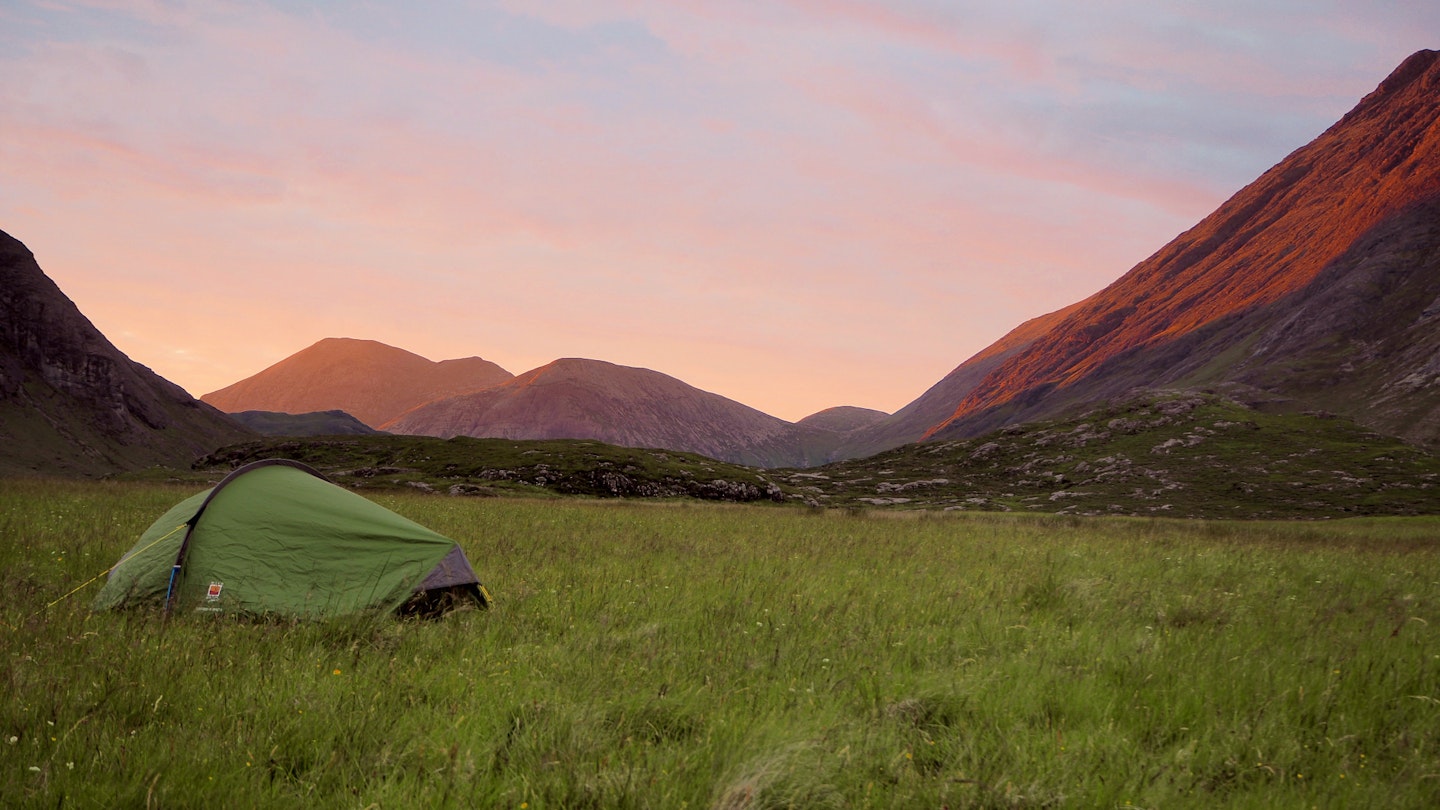
When it comes to lightweight tents, users often size up especially for longer trips because of the extra space available in return for a marginal size and weight increase. So, a solo backpacker will often treat themselves to a two-person tent; a pair upgrade to a three-person tent, and so on.
Ultimately, consider your rucksack size and volume, and be sure to check dimensions of a tent's packed size before committing to it. For a good quality, 3-season tent, 2.2lbs or under is extremely light, 3.3lbs is good, and more than 4.4lbs is a tad on the heavy side.
If you plan to squeeze into a one-person tent then anything less than 2lbs is great.
How much internal space should a backpacking tent have?
You want a minimum of 23.6in of shoulder width per person and a length of at least 6ft 11in. Some tents are asymmetric and are narrower at one end than the other.
In terms of height, an absolute minimum of 3ft should allow the majority of people to sit upright, and for vestibule space, well, the more the better for stashing kit.
Do all backpacking tents pitch the same?
Some tents, particularly from US brands, are pitched inner first because they are best suited to warmer conditions and often used without the flysheet. But, it isn't ideal if it's raining. Others are pitched outer first or all-as-one, enabling the interior to be kept dry while the flysheet is pegged out.
Whichever design you opt for, rest assured that tents these days are all easy to pitch thanks to simple innovations like color-coded poles. It's been a few years since we've come across a backpacking tent that was tricky to pitch.
How do I ensure my backpacking tent is weatherproof?

In addition to the overall shape, which we've mentioned above, for an indication of how waterproof a tent really is, check the hydrostatic head (HH) of the flysheet and groundsheet. A lot of lightweight tents' waterproof ratings may seem disappointingly low. However, many other factors, including silicone or PU coatings, the tent's shape, sealed seams, and the tightness of a fabric's weave, affect waterproofing.
As a rule of thumb, however, a 2,000mm HH for the flysheet and 4,000mm HH for the groundsheet are good baselines for a tent if you're expecting to encounter heavy rain on your adventures. You can also boost underfloor water resistance with the use of a tent footprint.
Another key component of a tent's weather resistance is the flysheet. For maximum weatherproofing, a tent's flysheet – the waterproof outer – should peg out flush to the ground and be easily adjustable via tension straps so that it's taut, stable and well-shaped. Some flysheets don't quite reach the ground, which aids ventilation but risks water ingress and drafts.
Why is ventilation important?

Condensation can be difficult to avoid in humid and wet climates, so good ventilation is key. Mesh vents on the interior and vent windows on the flysheet will help increase airflow, as will mesh panels on the interior walls. Good clearance between the interior and outer is very important too.
What other features should I consider?
Other important features include: a good-sized porch for stashing your backpacking pack and boots, a wide door for easy entry and exit, sufficient length and width for lying down (check carefully if you're 6ft+), a stormflap over the main zipper, internal pockets for gear organization, an easy-to-fill carry bag, strong poles, good pegs, sturdy pegging out loops and robust guy lines.
How do I clean my tent?
To maintain the performance and waterproofing of your tent, you need to care for and clean them properly. You wouldn't reasonably expect longevity out of anything that isn't cared for.
Tent cleaning and care is easy and primarily involves cleaning them after use with the correct cleaning products and making sure they're completely dry before storing them away.
If your tent is in need of a repair, get in touch with a specialist repair agent or the retailer/manufacturer. Outdoor gear repair services are continually improving as both brands and customers aim to be more sustainable (repair is also much cheaper than replacing).
You can also waterproof a tent yourself if the seams or fabric starts leaking.
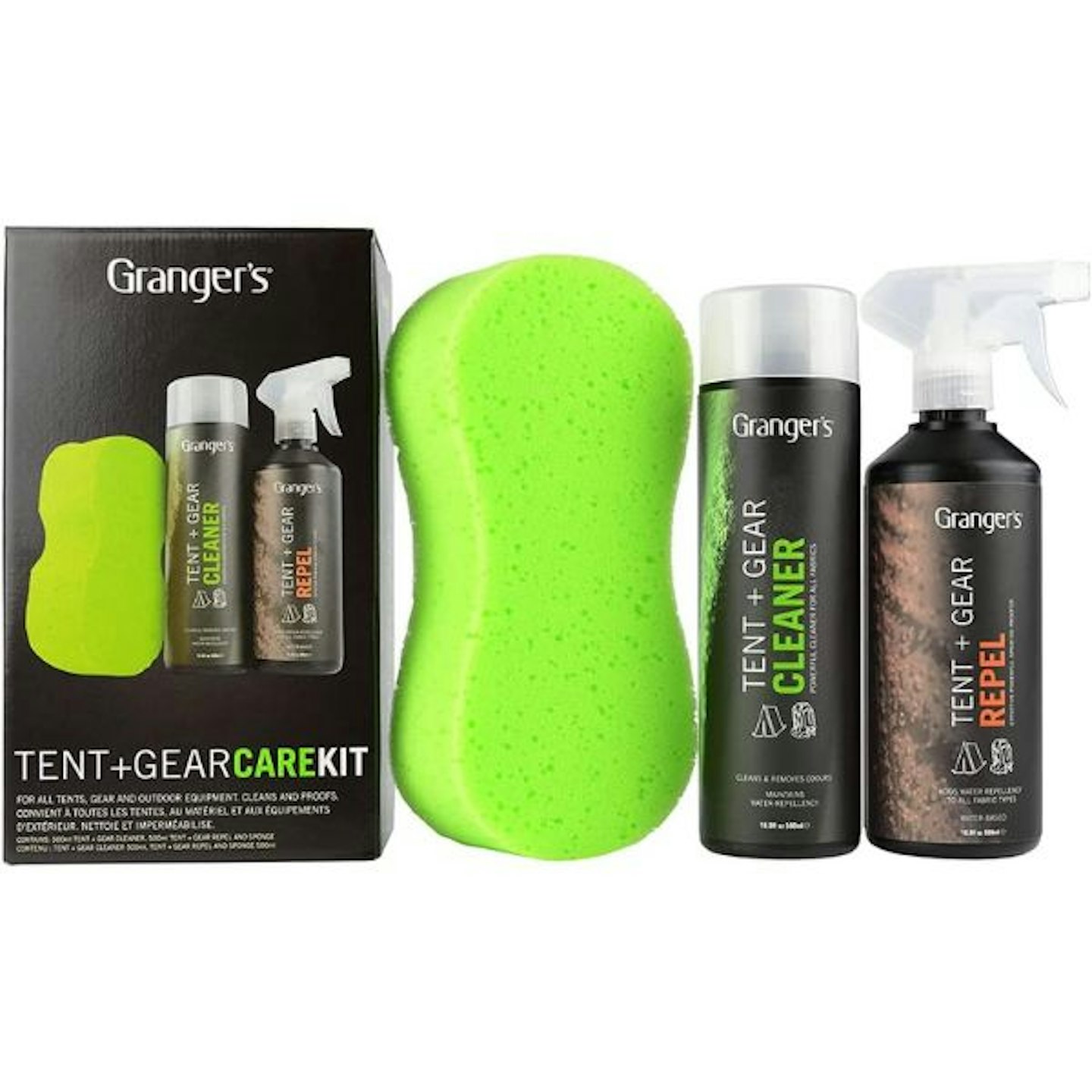
Grangers' effective and eco-friendly care kit for tents and outdoor gear such as packs. It even comes with a sponge to help apply the Cleaner solution. The Cleaner and Repel are available to buy individually, too.
Pros
- Water-based and PFC-free
- Easy spray-on water repel
- Good value
Cons
- Reproofing spray needs applied quite regularly
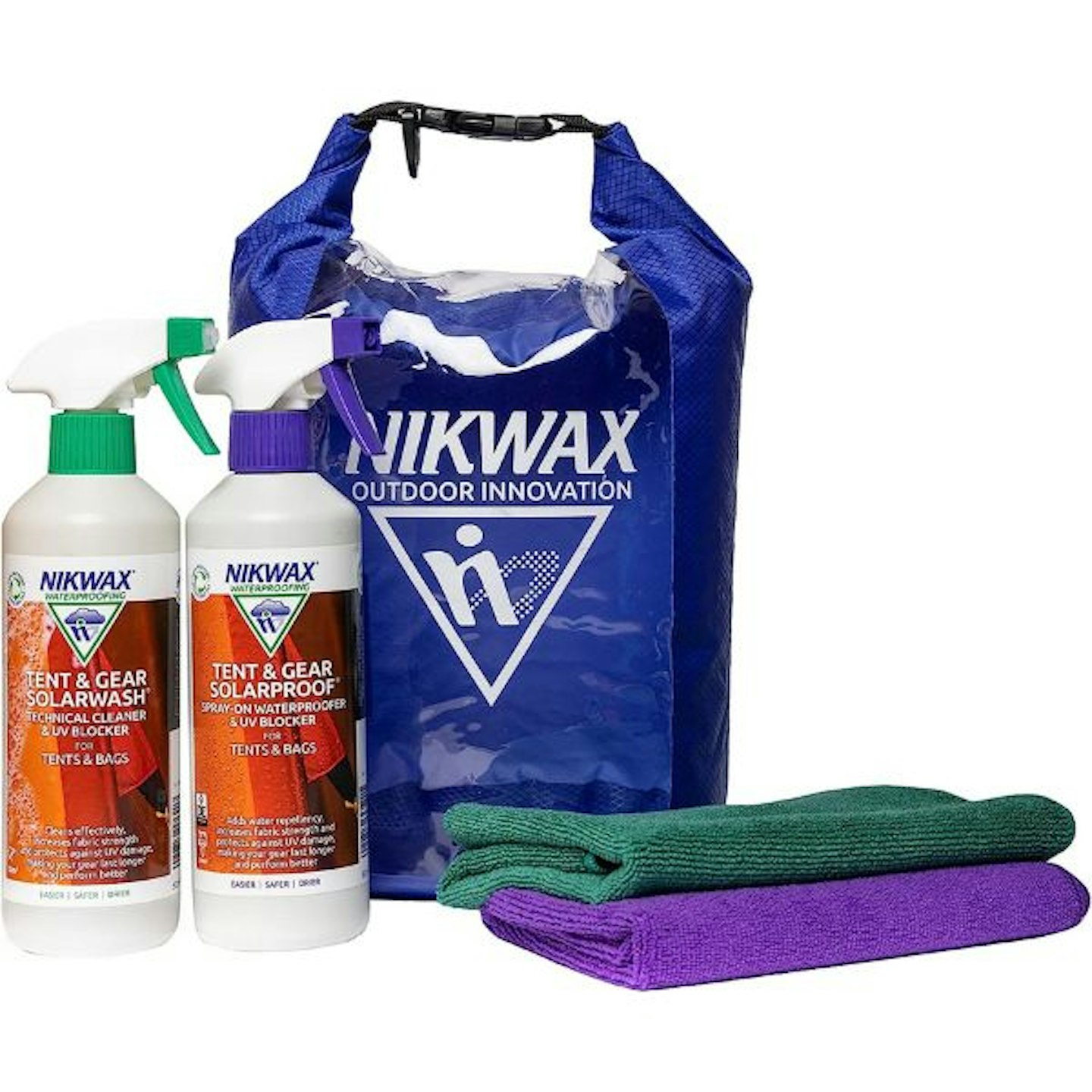
rei.pxf.io
Nikwax's tent and gear care kit. It's just as good as the Grangers kit and also water-based and PFC-free. SolarWash and SolarProof are available to buy individually.
Pros
- Water-based and PFC-free
- Dry bag included
Cons
- Reproofing spray needs applying quite regularly
About the authors

James Forrest is a prolific peak bagger and long-distance walker who’s one of the most high-profile outdoor writers in the UK. He writes regular features and route guides for Trail and has been one of our main gear testers for the last few years.
Matt Jones is a dedicated long-distance walker who's also a very respected voice in the outdoor industry. He's previously edited both Walk and Scouting magazines, and has been reviewing gear for years, including for Trail magazine and LFTO.




